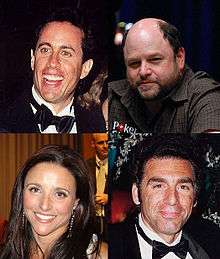1990s
The 1990s (pronounced "nineteen-nineties"; shortened to "the '90s") was a decade of the Gregorian calendar that began on 1 January 1990, and ended on 31 December 1999.

| Millennium: | 2nd millennium |
| Centuries: | |
| Decades: | |
| Years: | |
| Categories: |
|
Culturally, the 1990s are characterized by the rise of multiculturalism and alternative media, which continued into the 2000s and 2010s. Movements such as grunge, the rave scene and hip hop spread around the world to young people during that decade, aided by then-new technology such as cable television and the World Wide Web.
A combination of factors, including the continued mass mobilization of capital markets through neo-liberalism, the thawing and end of the decades-long Cold War, the beginning of the widespread proliferation of new media such as the Internet from the middle of the decade onwards, increasing skepticism towards government, and the dissolution of the Soviet Union led to a realignment and reconsolidation of economic and political power across the world and within countries. The dot-com bubble of 1997–2000 brought wealth to some entrepreneurs before its crash between 2000 and 2001.
The 1990s saw extreme advances in technology, with the World Wide Web, the first gene therapy trial, and the first designer babies[1] all emerging in 1990 and being improved and built upon throughout the decade.
New ethnic conflicts emerged in Africa, the Balkans, and the Caucasus, the former two which led to the Rwandan and Bosnian genocides, respectively. Signs of any resolution of tensions between Israel and the Arab world remained elusive despite the progress of the Oslo Accords, though The Troubles in Northern Ireland came to a standstill in 1998 with the Good Friday Agreement after 30 years of violence.[2]
Politics and wars
Wars
The most prominent armed conflicts of the decade include:
International wars
- The Congo wars break out in the 1990s:[3]
- The First Congo War takes place in Zaire from October 1996 to May 1997, resulting in Zairian dictator Mobutu Sese Seko being overthrown from power, ending 32 years of his rule. Zaire is renamed the Democratic Republic of the Congo.
- The Second Congo War starts in August 1998 in central Africa and involves multiple nearby nations. It continued until July 2003.
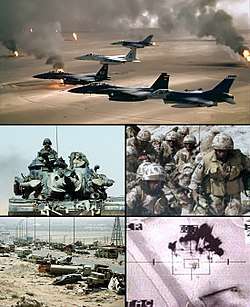
- The Gulf War – Iraq was left in severe debt after the 1980s war with Iran. President Saddam Hussein accused Kuwait of flooding the market with oil and driving down prices. As a result, on 2 August 1990, Iraqi forces invaded and conquered Kuwait. The UN immediately condemned the action, and a coalition force led by the United States was sent to the Persian Gulf. Aerial bombing of Iraq began in January 1991 (see also Gulf War), and a month later, the UN forces drove the Iraqi army from Kuwait in just four days. In the aftermath of the war, the Kurds in the north of Iraq and the Shiites in the south rose up in revolt, and Saddam Hussein barely managed to hold onto power. Until the US invasion in 2003, Iraq was cut off from much of the world.
- The Chechen wars break out in the 1990s:
- The First Chechen War (1994–1996) – the conflict was fought between the Russian Federation and the Chechen Republic of Ichkeria. After the initial campaign of 1994–1995, culminating in the devastating Battle of Grozny, Russian federal forces attempted to seize control of the mountainous area of Chechnya but were set back by Chechen guerrilla warfare and raids on the flatlands in spite of Russia's overwhelming manpower, weaponry, and air support. The resulting widespread demoralization of federal forces, and the almost universal opposition of the Russian public to the conflict, led Boris Yeltsin's government to declare a ceasefire in 1996 and sign a peace treaty a year later.
- The Second Chechen War (1999–2009) – the war was launched by the Russian Federation starting 26 August 1999, in response to the Invasion of Dagestan and the Russian apartment bombings which were blamed on the Chechens. During the war Russian forces largely recaptured the separatist region of Chechnya.[4] The campaign largely reversed the outcome of the First Chechen War, in which the region gained de facto independence as the Chechen Republic of Ichkeria.
- The Kargil War (1999) – In May 1999, Pakistan sent troops covertly to occupy strategic peaks in Kashmir. A month later the Kargil War with India results in a political fiasco for Prime Minister Nawaz Sharif, followed by a Pakistani military withdrawal to the Line of Control. The incident leads to a military coup in October, in which Sharif is ousted by Army Chief Pervez Musharraf. This conflict remains the only war fought between two declared nuclear powers.
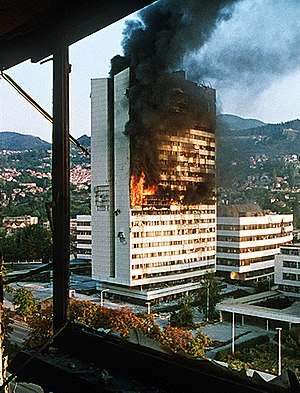
- The Yugoslav Wars (1991–1995) – The breakup of Yugoslavia beginning on 25 June 1991 after the republics of Croatia and Slovenia declared independence from Yugoslavia which was followed by the subsequent Yugoslav wars. The Yugoslav Wars would become notorious for numerous war crimes and human rights violations such as ethnic cleansing and genocide committed by all sides.
- Ten-Day War (1991) – a brief military conflict between Slovenian TO (Slovenian Territorial Defence) and the Yugoslav People's Army (JNA) following Slovenia's declaration of independence.
- Croatian War of Independence (1991–1995) – the war fought in hegh town Croatia between the Croatian government, having declared independence from the Socialist Federal Republic of Yugoslavia, and both the Yugoslav People's Army (JNA) and Serb forces, who established the self-proclaimed Republic of Serbian Krajina (RSK) within Croatia.
- Bosnian War (1992–1995) – the war involved several ethnically defined factions within Bosnia and Herzegovina: Bosniaks, Serbs and Croats as well as a smaller Bosniak faction led by Fikret Abdić. The Siege of Sarajevo (1992–1995) marked the most violent urban warfare in Europe since World War II at that time as Serb forces bombard and attack Bosniak controlled and populated areas of the city. War crimes occur including ethnic cleansing and destruction of civilian property.
- The final fighting in Croatian and Bosnian wars ends in 1995 with the success of Croatian military offensives against Serb forces and the mass exodus of Serbs from Croatia in 1995; Serb losses to Croat and Bosniak forces; and finally the signing of the Dayton Agreement which internally partitioned Bosnia and Herzegovina into a Republika Srpska and a Bosniak-Croat federation.
- Kosovo War (1998–1999) – the war between Albanian separatists and Yugoslav military and Serb paramilitary forces in Kosovo begins in 1996 and escalates in 1998 with increasing reports of atrocities taking place.
- In 1999, the North Atlantic Treaty Organization (NATO) led by the United States launched air attacks against Yugoslavia (then composed of only Serbia and Montenegro) to pressure the Yugoslav government to end its military operations against Albanian separatists in Kosovo. The intervention lacked UN approval, yet was justified by NATO based on accusations of war crimes being committed by Yugoslav military forces working alongside nationalist Serb paramilitary groups. After months of bombing, Yugoslavia accepted NATO's demands and NATO forces (later UN peacekeeping forces) occupied Kosovo.
Civil Wars and guerrilla wars
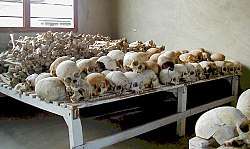
- The Rwandan genocide – between 6 April 1994 until mid-July 1994 a mass killing of hundreds of thousands of Rwanda's Tutsis and Hutu political moderates occurred by the Hutu dominated government under the Hutu Power ideology. Over the course of approximately 100 days, at least 500,000 people were killed.[5] Estimates of the death toll have ranged between 500,000 and 1,000,000,[6] or as much as 20% of the total population of the country. It resulted in serious criticism of the United Nations and major countries for failing to stop the genocide.
- In Algeria a long period of violence in the north African country starts by the cancellation of the first ever held democratic elections by a group of high-ranking army officers.
- The Ethiopian Civil War ends in 1991, ending over twenty years of internal conflict. The end of the war coincides with the establishment of a coalition government of various factions.
- Oka Crisis takes place in 1990 involving an armed standoff between people of the Mohawk nation (North American indigenous peoples in Canada), and the Canadian military over a dispute involving land held via treaty to the Mohawk people.
- A large number of the Zapatista indigenous people of Mexico join the Zapatista Army of National Liberation that begins armed conflict with the Mexican government in 1994 and continues through the 1990s.
- The Taliban seize control of Afghanistan in 1996.
- The 1992 Los Angeles riots occurred, with 53 deaths and 5,500 property fires in a 100-square-mile (260 km2) riot zone. The riots were a result of the state court acquittal of three White and one Hispanic L.A. police officers by an all-white jury in a police brutality case involving motorist Rodney King, but in 1993, all four officers were convicted in a federal civil rights case.
- The Somali Civil War (1991 – present) and the Battle of Mogadishu.
- Severe political deadlock between Russian President Boris Yeltsin and the Supreme Soviet (Russia's parliament at this time) result in Yeltsin ordering the controversial shelling of the Russian parliament building by tanks in 1993.
- The Tajikistan civil war, which pits the Tajikistan government against the United Tajik Opposition, lasts from 1992 until 1997 and results in the death of 50,000 to 100,000 people.
- After over 30 years of fighting, The Troubles in Northern Ireland end on 10 April 1998 when the Good Friday Agreement is signed.
Coups
Terrorist attacks
- The 1993 World Trade Center bombing and the Oklahoma City bombing leads to awareness in United States of domestic and international terrorism as a potential threat.
- Markale market massacres in Bosnia and Herzegovina in 1994 involving soldiers of the Army of Republika Srpska deliberately targeting Bosniak (then known as "Bosnian Muslims") civilians.
- Srebrenica massacre in Bosnia and Herzegovina in 1995 involving soldiers of the Army of Republika Srpska and members of Serbia's Scorpions paramilitary group committing mass murder of Bosniak civilians.
- The Oklahoma City bombing in 1995, the bombing of a federal building in Oklahoma City, Oklahoma, killed 168, becoming the deadliest terrorist attack in the United States for that time. Bombing suspect Timothy McVeigh claimed he bombed the building in retaliation for the 1992 Ruby Ridge standoff and the Waco siege a year later.[7]
- After the bombings of United States embassies in Kenya and Tanzania by Al-Qaeda militants, United States naval military forces launch cruise missile attacks against Al-Qaeda bases in Afghanistan in 1998.
- The Omagh bombing in Omagh, County Tyrone, Northern Ireland which killed 29 civilians and injured hundreds more.
- Ahmed Ressam, an Islamist militant associated with Al-Qaeda is arrested when attempting to cross from Canada to the United States at the Canada-United States border on 14 December 1999; it is discovered that he intended to bomb Los Angeles International Airport during millennium celebrations. This is the first major attempted terrorist attack by Al Qaeda on United States soil since the 1993 World Trade Center bombing and marked the beginning of a series of attempted terrorist attacks by Al Qaeda against the United States that would continue into the 21st century.
- AMIA bombing – On 18 July 1994 an unknown terrorist targeting Argentina's Jewish community plants a car-bomb in the AMIA Headquarters in Buenos Aires, killing 85 people and injuring hundreds, making it the first ethnically targeted and deadliest bombing in Argentine history
- on 15 June 1996, the IRA set off a bomb in Manchester, England. The bomb, placed in a van on Corporation Street in the city centre, targeted the city's infrastructure and economy and caused widespread damage, estimated by insurers at £700 million (£1 billion as of 2011). Two hundred and twelve people were injured, but there were no fatalities.
Decolonization and independence
- Namibia gains independence from South Africa on 21 March 1990. Walvis Bay, initially retained by South Africa, joins Namibia in 1994.
- The republics of Croatia, Slovenia, Bosnia and Herzegovina, and Macedonia declared independence from Yugoslavia.
- The Slovak Republic adopts the Declaration of Independence from the Czech and Slovak Federative Republic (Czechoslovakia).
- Eritrea gains independence from Ethiopia (1993).
- Palau gains independence from the United Nations Trusteeship Council.
- United Kingdom hands sovereignty of Hong Kong to the People's Republic of China on 1 July 1997.
- East Timor breaks away from Indonesian control in 1999, merely a year after the fall of Suharto from power, ending a 24-year guerrilla war and genocide with more than 200,000 casualties. The UN deploys a peace keeping force, spearheaded by the Australian armed forces. The United States deploys police officers to serve with the International Police element, to help train and equip an East Timorese police force.
- Portugal hands sovereignty of Macau to the People's Republic of China on 20 December 1999.
- The republics of Armenia, Azerbaijan, Belarus, Estonia, Georgia, Kazakhstan, Kyrgyzstan, Latvia, Lithuania, Moldova, Tajikistan, Turkmenistan, Ukraine, and Uzbekistan declared independence from the USSR.
Prominent political events
- The 1990s was an era of spreading capitalism.[8] The former countries of the Warsaw Pact moved from single-party socialist states to multi-party states with private sector economies.[8] The same wave of political liberalisation occurred in capitalist countries, such as Taiwan, Chile, South Africa, and Indonesia. Market reforms made great changes to the economies of socialist countries like China and Vietnam.
- The ethnic tensions and violence in the former Yugoslavia during the 1990s create a greater sense of ethnic identity of the nations in the new countries, especially involving increased popularity of nationalism.
Africa
South Africa
- The release of African National Congress leader Nelson Mandela from Robben Island on 11 February 1990 after thirty years of imprisonment for opposing apartheid and white-minority rule in South Africa. This would resolve with the end of Apartheid in South Africa in 1994.[9]
- Nelson Mandela is elected President of South Africa in 1994, becoming the first democratically elected President in South African history ending a long legacy of apartheid white-rule in the country.[9]
North America
The enactment of the North American Free Trade Agreement (NAFTA) on 1 January 1994, creating a North American free trade zone consisting of Canada, Mexico, and the United States
Canada
- Canadian politics is radically altered in the 1993 federal election with the collapse of the Progressive Conservative Party of Canada, (a major political party in Canada since 1867) from being in government to only 2 seats and the New Democratic Party collapsing from 44 seats to 9. The Liberal Party of Canada is the only genuine national political party that remains while the regionally based parties such as the Quebec-based Bloc Québécois and the almost entirely Western Canada-based Reform Party of Canada rise from political insignificance to being major political parties.
- After the collapse of the Meech Lake constitutional accord in 1990, the province of Quebec in Canada experienced a rekindled wave of separatism by francophone Québécois nationalists, who sought for Quebec to become an independent country. In 1995, during a referendum on Quebec sovereignty, Quebec voters narrowly reject the vote for independence.
- The 1995 Quebec referendum on sovereignty is held in the predominantly francophone province of Quebec in Canada, a majority anglophone country. If accepted Quebec would become an independent country with an economic association with Canada. The proposal is narrowly rejected by Quebec's voters by 50.4% no, and 49.6% yes.
Haiti
- Jean-Bertrand Aristide becomes the first democratically elected President of Haiti in 1990.
Jean-Bertrand Aristide is a former Haitian priest and politician who became Haiti's first democratically elected president. A proponent of liberation theology, Aristide was appointed to a Roman Catholic parish in Port-au-Prince in 1982 after completing his studies to become a priest of the Salesian order.He was born 66 years (July 15, 1953). He made 11 books.Jean-Bertrand Aristide (born 15 July 1953) is a former Haitian priest and politician who became Haiti's first democratically elected president. ... Aristide was later forced into exile in the Central African Republic and South Africa. He finally returned to Haiti in 2011 after seven years in exile.
United States
- United States President Bill Clinton was a dominant political figure in international affairs during the 1990s known especially for his attempts to negotiate peace in the Middle East and end the ongoing wars occurring in the former Yugoslavia; his promotion of international action to decrease human-created climate change; and his endorsement of advancing free trade in the Americas.
- Lewinsky scandal – US president Bill Clinton was caught in a media-frenzied scandal involving inappropriate relations with a White House intern Monica Lewinsky, first announced on 21 January 1998. After the United States House of Representatives impeached Clinton on 19 December 1998 for perjury under oath, following an investigation by federal prosecutor Kenneth Starr, the Senate acquitted Clinton of the charges on 12 February 1999 and he finished his second term.
- California voters passed Proposition 215 in 1996, to legalize cannabis for medicinal purposes. The debate over legalization of marijuana in the United States goes on today.
- The enactment of the North American Free Trade Agreement (NAFTA) on 1 January 1994, creating a North American free trade zone consisting of Canada, Mexico, and the United States.
Asia
Middle East
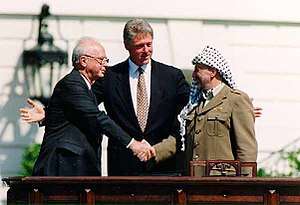
- In 1990, the ending of the civil war and the return to political normalcy in Lebanon began. With the peace among all factions in Lebanon, the rebuilding of Lebanon and its capital, Beirut, started.
- Israeli Prime Minister Yitzhak Rabin and Palestinian Prime Minister Yasser Arafat agree to the Israeli–Palestinian peace process at the culmination of the Oslo Accords, negotiated by the United States President Bill Clinton on 13 September 1993. By signing the Oslo accords, the Palestine Liberation Organization recognize Israel's right to exist, while Israel permitted the creation of an autonomous Palestinian National Authority consisting of the Gaza Strip and West Bank which was implemented in 1994. Israeli military forces withdraw from the Palestinian territories in compliance with the accord, which marked the end of the First Intifada (a period of violence between Palestinian Arab militants and Israeli armed forces from 1987 to 1993).
- The Palestinian National Authority is created in 1994 in accordance with the Oslo Accords, giving Palestinian Arab people official autonomy over the Gaza Strip and West Bank, though not official independence from Israel.
- In 1994, a peace treaty is signed between Israel and Jordan.
- North Yemen and South Yemen merge to form Yemen in 1991.
Far East
- Lee Kuan Yew relinquished prime-ministership of Singapore on 28 November 1990, a position he held since 1959, to Goh Chok Tong. He remained in the cabinet as Senior Minister.
- In July 1994, North Korean leader Kim Il-sung died, having ruled the country since its founding in 1948. His son Kim Jong-il succeeded him, taking over a nation on the brink of complete economic collapse. Famine caused a great number of deaths in the late '90s, and North Korea would gain a reputation for being a large source of money laundering, counterfeiting, and weapons proliferation. The country's ability to produce and sell nuclear weapons became a focus of concern in the international community.
- Aung San Suu Kyi's National League for Democracy in Burma wins a majority of seats in the first free elections in 30 years in 1990, yet the Burmese military junta refuses to relinquish power, beginning an ongoing peaceful struggle throughout the 1990s to the present by Aung San Suu Kyi and her supporters to demand the end of military rule in Burma.
- In the Philippines two Presidents were elected, Fidel V. Ramos in 1992 and Joseph Estrada in 1998.
- Indonesian president Suharto resigned after ruling for 32 years (1966–1998).
Europe
- The improvement in relations between the countries of NATO and the former members of the Warsaw Pact ended the Cold War both in Europe and other parts of the world.
- German reunification – Germany reunified on 3 October 1990 as a result of the fall of the Berlin Wall and after integrating the economic structure and provincial governments, focused on modernization of the former communist East. People who were brought up in a socialist culture became integrated with those living in capitalist western Germany.
- Margaret Thatcher, who had been the United Kingdom's Prime Minister since 1979, resigned as Prime Minister on 22 November 1990 after being challenged for the leadership of the Conservative Party by Michael Heseltine. This was because of widespread opposition to the introduction of the controversial Community Charge, and the fact that her key allies such as Nigel Lawson and Geoffrey Howe resigned over the deeply sensitive issues of the Maastricht Treaty and Margaret Thatcher's resistance to Britain joining the European Exchange Rate Mechanism. Less than two years later on the infamous Black Wednesday of September 1992, the pound sterling crashed out of the system after the pound fell below the agreed exchange rate with the Deutsche Mark.
- John Major replaces Margaret Thatcher as Prime Minister in 1990.
- The restructuring of the Soviet Union destabilizes, as nationalist and separatist demagogues gain popularity. Boris Yeltsin, then chairman of the Supreme Soviet of Russia, resigns from the Communist Party and becomes the opposition leader against Mikhail Gorbachev. The Communist Party loses its status as the governing force of the country and is banned after a coup attempt by Communist hardliners attempted to revert the effects of Gorbachev's policies. Yeltsin's counter-revolution is victorious on 25 December 1991 with the resignation of Gorbachev from presidency and the dissolution of the USSR. Yeltsin became president of the successor Russian Federation and presided over a period of political unrest, economic crisis, and social anarchy. On 31 December 1999, Yeltsin resigned leaving Vladimir Putin as acting president.
- The European Union forms in 1992 under the Maastricht Treaty.
- The Downing Street Declaration 15 December 1993 by the Prime Minister of the United Kingdom, John Major, and the Taoiseach of Ireland, Albert Reynolds at the British Prime Minister's office in 10 Downing Street. It affirmed both the right of the people of Ireland to self-determination, and that Northern Ireland would be transferred to the Republic of Ireland from the United Kingdom only if a majority of its population was in favour of such a move. It included, as part of the prospective of the so-called "Irish dimension", the principle of consent that the people of the island of Ireland, had the exclusive right to solve the issues between North and South by mutual consent.[10][11] The latter statement, which later would become one of the points of the Good Friday Agreement,[12] was key to produce a positive change of attitude by the republicans towards a negotiated settlement. The joint declaration also pledged the governments to seek a peaceful constitutional settlement, and promised that parties linked with paramilitaries (such as Sinn Féin) could take part in the talks, so long as they abandoned violence.[13]
- The IRA agreed to a truce in 1994. This marked the beginning of the end of 25 years of violence between the IRA and the United Kingdom, and the start of political negotiations.
- Tony Blair becomes Prime Minister in 1997 following the 1997 United Kingdom general election.
- The Belfast Agreement (a.k.a. the Good Friday Agreement) is signed by U.K. and Irish politicians on 10 April 1998, declaring a joint commitment to a peaceful resolution of the territorial dispute between Ireland and the United Kingdom over Northern Ireland. The 1998 Northern Ireland Good Friday Agreement referendum was held on 22 May 1998. There was a large majority of 'Yes'. A total of 1,738 ballots were spoiled. Turnout, at 81.1% was very high for a developed country where voting is not compulsory.[14] Turnout in the equivalent referendum in the Republic of Ireland was average for a constitutional referendum but returned almost universal approval (94.39%).
- The National Assembly for Wales established following the 1997 Welsh devolution referendum was held on 18 September 1997 in which voters approved the creation of the National Assembly for Wales by a majority of 6,712 votes, or 50.3% of the vote.[15] The following year the Government of Wales Act was passed by the United Kingdom parliament, establishing the Assembly
- The Scottish Parliament established following a referendum in September 1997, the 1997 Scottish devolution referendum was put to the Scottish electorate and secured a majority in favour of the establishment of a new devolved Scottish Parliament, with tax-varying powers, in Edinburgh.[16] An election was held on 6 May 1999, and on 1 July of that year power was transferred from Westminster to the new Parliament.[17]
South America
Peru
- Due to the Internal conflict in Peru and the economic crisis, Alberto Fujimori rises to power in Peru and remains in office for eleven years. His administration is marked by economic development but also by numerous human rights violations (La Cantuta massacre, Barrios Altos massacre), and a rampant corruption network set up by Vladimiro Montesinos.
Notable world leaders
This is a list of leaders of states and notable organisations. Names of leaders shown in bold have remained in power continuously throughout the decade.[note 1]
Assassinations and attempts
Prominent assassinations, targeted killings, and assassination attempts include:
- 9 September 1990 – Samuel Doe, the President of Liberia, is captured by rebels and is tortured and murdered. The spectacle was videotaped and seen on news reports around the world.
- 19 September 1990 – The Provisional Irish Republican Army tries to assassinate Air Chief Marshal Sir Peter Terry at his home near Stafford, England. Hit by at least 9 bullets, the former Governor of Gibraltar survives.
- 21 May 1991 – In Sriperumbudur, India, former Prime Minister Rajiv Gandhi is assassinated.
- 7 August 1991 – Shapour Bakhtiar, former prime minister of Iran, is assassinated.
- 23 May 1992 – A remote car bomb causes the death of Italian Judge Giovanni Falcone, a hero in the fight against organized crime. Less than two months later, on 19 July, Falcone's co-worker and friend, magistrate Paolo Borsellino was killed by a car bomb in via D'Amelio, Palermo, in front of his mother's house.
- 29 June 1992 – A bodyguard assassinates President Mohamed Boudiaf of Algeria.
- April 1993 – The Kuwaiti government claims to uncover an Iraqi assassination plot against former United States President George H. W. Bush shortly after his visit to Kuwait. Two Iraqi nationals confess to driving a car-bomb into Kuwait on behalf of the Iraqi Intelligence Service.[18]
- 1 May 1993 – A Tamil Tigers suicide bomber assassinates President Ranasinghe Premadasa of Sri Lanka.
- 21 October 1993 – Burundian President Melchior Ndadaye is killed during an attempted military coup.
- 2 December 1993 – Pablo Escobar also known as "The King of Cocaine" was killed by Members of Colonel Hugo Martínez's Search Bloc in Medellín, Colombia
- 23 March 1994 – Luis Donaldo Colosio Murrieta was assassinated at a campaign rally in Tijuana during the Mexican Presidential campaign of 1994.
- 6 April 1994 – The airplane carrying Rwandan President Juvénal Habyarimana and Burundian President Cyprien Ntaryamira is shot down as it prepared to land in Kigali, Rwanda, sparking the Rwandan genocide and eventually, the First Congo War. The perpetrators have never been identified.
- 2 July 1994 – Colombian football player Andrés Escobar was shot by Humberto Castro Muñoz in Medellín, Colombia
- 29 August 1995 – Eduard Shevardnadze, the Georgian head of state, survives an assassination attempt in Tbilisi.
- 4 November 1995 – Israeli Prime Minister Yitzhak Rabin is assassinated at a peace rally in Tel Aviv by a radical Jewish militant who opposed the Oslo Accords.
- 31 March 1995 – Tejano pop singer Selena is shot by fan club president Yolanda Saldívar over financial problems and missing records. 2 weeks after death, her birthday is named Selena Day in Texas.
- 21 April 1996 – Dzhokhar Dudayev, the President of Chechnya, is killed by two laser-guided missiles, after his location was detected by a Russian reconnaissance aircraft, which intercepted his phone call.
- 2 October 1996 – The former prime minister of Bulgaria, Andrei Lukanov, is assassinated.
- 15 July 1997 Gianni Versace was shot dead, aged 50, on the steps of his Miami Beach mansion as he returned from a morning walk on Ocean Drive. He was murdered by Andrew Cunanan, who was also liable in murdering four others including Lee Miglin, a real estate developer and Chicago tycoon two months prior, and used the same gun to commit suicide on a houseboat several days later. Police have said they do not know why Versace was killed.
- 9 February 1998 – Eduard Shevardnadze, the Georgian head of state, survives an assassination attempt in Tbilisi.
- 16 February 1999 – In Uzbekistan, an apparent assassination attempt against President Islam Karimov takes place at government headquarters.
- 23 March 1999 – Gunmen assassinate Paraguay's Vice President Luis María Argaña.
- 9 April 1999 – Ibrahim Baré Maïnassara, president of Niger, is assassinated.
Disasters
Natural disasters
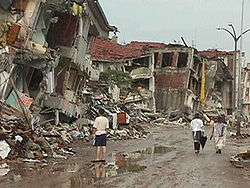
The 1990s saw a trend in increasingly frequent and more devastating natural disasters, breaking many previous records. Although the 1990s was designated by the United Nations as an International Decade for Natural Disaster Reduction as part of its program to prevent losses due to the disasters, its disasters would go on to cause a record-breaking US$608 billion worth of damage—more than four previous decades combined.[19]
- The most prominent natural disasters of the decade include: Hurricane Andrew striking South Florida in August 1992, the crippling super storm of March 1993 along the Eastern Seaboard, the devastating 1994 Northridge earthquake in Los Angeles, the Great Hanshin earthquake in Kobe, Japan in January 1995, the Blizzard of 1996 in the eastern United States, the US drought of 1999, the deadly Hurricane Mitch which struck Central America in October 1998, and the destructive Oklahoma tornado outbreak in May 1999, the August 1999 İzmit earthquake in Turkey, and the September 1999 Chi-Chi earthquake in Taiwan.
- A magnitude 7.8 earthquake hit the Philippines on 16 July 1990 and killed around 1000 people in Baguio City.
- After 600 years of inactivity the Mount Pinatubo in the Philippines erupted and devastated Zambales and Pampanga in June 1991.
- July 1995 – Midwestern United States heat wave – An unprecedented heat wave strikes the Midwestern United States for most of the month. Temperatures peak at 106 °F (41 °C), and remain above 94 °F (34 °C) in the afternoon for 5 straight days. At least 739 people died in Chicago alone.
- Hurricane Georges made landfall in at least seven different countries (Antigua and Barbuda, St. Kitts and Nevis, Haiti, the Dominican Republic, Cuba and the United States) and Puerto Rico, a Commonwealth of the United States – more than any other hurricane since Hurricane Inez of the 1966 season. The total estimated costs were in the $60 billion (present day $100 billion).
- September 1996 – Hurricane Fran made landfall in North Carolina causing significant damage throughout the whole state.
- Hurricane Iniki hits the island of Kauai in the Hawaiian Islands on 11 September 1992, making it one of the costliest hurricanes on record in the eastern Pacific.
- A flood hits the Red River Valley in 1997 becoming the most severe flood since 1826.
- In December 1999, torrential rains and flash floods killed tens of thousands of Venezuelans living in the state of Vargas, in a natural disaster known as the Vargas tragedy.
Non-natural disasters

- Gulf War oil spill – Resulting from actions taken during the Gulf War in 1991 by the Iraq military, the oil spill caused considerable damage to wildlife in the Persian Gulf especially in areas surrounding Kuwait and Iraq.
- On 11 July 1991, a Nationair Douglas DC-8, chartered by Nigeria Airways, caught fire and crashed in Jeddah, Saudi Arabia, killing 261.
- On 15 December 1991, The Egyptian ferry Salem Express sinks in the Red Sea, killing more than 450.
- On 4 October 1992 – El Al Flight 1862, a Boeing 747 cargo airplane heading to Tel Aviv, suffered physical engine separation of both right-wing engines (#3 and #4) just after taking off from Schiphol and crashed into an apartment building in the Bijlmer neighbourhood of Amsterdam while attempting to return to the airport. A total of 43 people were killed, including the plane's crew of three and a "non-revenue passenger". Several others were injured.
- On 26 July 1993, Asiana Airlines Flight 733 crashed into Mt. Ungeo in Haenam, South Korea killing 68.
- On 26 April 1994, China Airlines Flight 140, an Airbus A300, crashed just as it was about to land at Nagoya Airfield, Japan, killing 264 and leaving only 7 survivors.
- On 8 September 1994, USAir Flight 427 crashed near Pittsburgh, Pennsylvania, killing 132.
- On 28 September 1994 – The car ferry MS Estonia sinks in the Baltic Sea, killing 852.
- On 29 June 1995, the Sampoong Department Store collapses in Seoul, South Korea, killing 502.
- On 20 December 1995, American Airlines Flight 965, a Boeing 757, hit a mountain in Colombia at night, killing 159.
- On 17 July 1996 Trans World Airlines Flight 800, a Boeing 747–131, exploded and crashed into the Atlantic Ocean near East Moriches, New York, killing 230.
- On 12 November 1996 a Saudia Boeing 747 and a Kazakhstan Airlines Ilyushin Il-76 collided over the town of Charkhi Dadri, outside New Delhi, India, killing 349.
- On 6 August 1997, Korean Air Flight 801, a Boeing 747-300, crashed into a hill on the island of Guam, killing 228.
- On 26 September 1997, Garuda Indonesia Flight 152 crashed in bad weather, killing 234.
- On 2 September 1998, Swissair Flight 111, a McDonnell Douglas MD-11, crashed into the Atlantic Ocean off Nova Scotia near the towns of Peggys Cove and Bayswater, killing 229.
- On 31 October 1999, EgyptAir Flight 990, a Boeing 767, crashed off the coast of Nantucket, Massachusetts, killing 217.
Economics
- Many countries, institutions, companies, and organizations were prosperous during the 1990s. High-income countries such as the United States, Canada, Australia, New Zealand, Japan, Singapore, Hong Kong, Taiwan, South Korea, and those in Western Europe experienced steady economic growth for much of the decade. However, in the former Soviet Union GDP decreased as their economies restructured to produce goods they needed and some capital flight occurred.
- GATT update and creation of the World Trade Organization and other global economic institutions, but opposition by anti-globalization activists showed up in nearly every GATT summit, like the demonstrations in Seattle in December 1999.
- The anti-globalization protests at the World Trade Organization Ministerial Conference of 1999 in Seattle, Washington began on 30 November 1999. This marks the beginning of a steady increase in anti-globalization protests which occurred in the first decade of the 21st century as well as increasing hostility to neoliberalism.
North America

- The decade is seen as a time of great prosperity in the United States, largely due to the unexpected advent of the Internet and the explosion of technology industries that came with it. The United States economy experiences its longest period of peace time economic expansion during the decade beginning in 1991. Personal incomes doubled from the recession in 1990, and there was higher productivity overall. The Wall Street stock exchange stayed over the 10,500 mark from 1999 to 2001.
- After the 1992 booming of the US stock market, Alan Greenspan coined the phrase "irrational exuberance".
- The North American Free Trade Agreement (NAFTA), which phases out trade barriers between the United States, Mexico, and Canada is signed into law by U.S. President Bill Clinton.
Asia
- The government of the People's Republic of China announces major privatization of state-owned industries in September 1997.
- China entered the '90s in a turbulent period, shunned by much of the world after the Tiananmen Square Massacre and controlled by hard line politicians who reigned in private enterprise and attempted to revive old-fashioned propaganda campaigns. Relations with the United States deteriorated sharply, and the Chinese leadership was further embarrassed by the disintegration of communism in Europe. In 1992, Deng Xiaoping travelled to southern China in his last major public appearance to revitalize faith in market economics and stop the country's slide back into Maoism. Afterwards, China recovered, and would experience explosive economic growth during the rest of the decade. In spite of this, dissent continued to be suppressed, and CPC General Secretary Jiang Zemin launched a brutal crackdown against the Falun Gong religious sect in 1999. Deng Xiaoping himself died in 1997 at the age of 93. Relations with the US deteriorated again in 1999 after the bombing of the Chinese embassy during the bombing of Serbia by NATO forces, which caused three deaths, and allegations of Chinese espionage at the Los Alamos Nuclear Facility.
- Financial crisis hits East and Southeast Asia in 1997 and 1998 after a long period of phenomenal economic development, which continues by 1999. This crisis begins to be felt by the end of the decade.
- In Japan, after three decades of economic growth put them in second place in the world's economies, the situation worsened after 1993. The recession went on into the early first decade of the 21st century, bringing an end to the seemingly unlimited prosperity that the country had hitherto enjoyed.
- Less affluent nations such as India, Malaysia, and Vietnam also saw tremendous improvements in economic prosperity and quality of life during the 1990s. Restructuring following the end of the Cold War was beginning. However, there was also the continuation of terrorism in Third World regions that were once the "frontlines" for American and Soviet foreign politics, particularly in Asia.
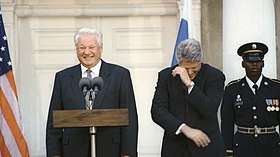
Europe
- By 1990, Soviet leader Mikhail Gorbachev's reforms were causing major inflation and economic chaos. A coup attempt by hard-liners in August 1991 failed, marking the effective end of the Soviet Union. All its constituent republics declared their independence in 1991, and on Christmas, Gorbachev resigned from office. After 73 years, the Soviet Union had ceased to exist. The new Russian Federation was headed by Boris Yeltsin, and would face severe economic difficulty. Oligarchs took over Russia's energy and industrial sectors, reducing almost half the country to poverty. With a 3% approval rating, Yeltsin had to buy the support of the oligarchs to win reelection in 1996. Economic turmoil and devaluation of the ruble continued, and with heart and alcohol troubles, he stepped down from office on the last day of 1999, handing power to Vladimir Putin.
- Russian financial crisis in the 1990s results in mass hyperinflation and prompts economic intervention from the International Monetary Fund and western countries to help Russia's economy recover.
- The first McDonald's restaurant opens in Moscow in 1990 with then-President of the Supreme Soviet of the Russian SFSR and future Russian President Boris Yeltsin attending, symbolizing Russia's transition towards a capitalist free market economy and a move towards adopting elements of western culture.
- Oil and gas were discovered in many countries in the former Soviet bloc, leading to economic growth and wider adoption of trade between nations. These trends were also fueled by inexpensive fossil energy, with low petroleum prices caused by a glut of oil. Political stability and decreased militarization due to the winding down of the Cold War led to economic development and higher standards of living for many citizens.
- Most of Europe enjoyed growing prosperity during the '90s. However, problems including the massive 1995 general strikes in France following a recession and the difficulties associated with German reunification lead to sluggish growth in these countries. However, both the French and German economies improve in the latter half of the decade. Meanwhile, the economies of particularly Spain, Scandinavia and former Eastern Bloc countries accelerate at rapid speed during the decade although unemployment being mild due to many having experienced a deep recession for the start of the decade.
- After the early 1990s recession, the United Kingdom and Ireland experience rapid economic growth and falling unemployment that continues throughout the decade. Economic growth would continue until the Late 2000s recession marking the longest uninterrupted period of economic growth in history.
- Some Eastern European economies struggled after the fall of communism, but Poland, Hungary, Czech Republic, Estonia, Latvia and Lithuania saw healthy economic growth rates in the late 1990s.
- With the creation of the EU there is freedom of movement between member states, such as the 1992 and 1995 free trade agreements.
- The euro is adopted by the European Union on 1 January 1999, which begins a process of phasing out national currencies of EU countries.[20]
South America
- The sluggish economies of Brazil, by a new emphasis on free markets for all their citizens, and Mexico, under economist president Ernesto Zedillo elected in 1994, were in their best shape by the late 1990s.
Technology and science
Technology
The 1990s were a revolutionary decade for digital technology. Between 1990 and 1997, individual personal computer ownership in the US rose from 15% to 35%.[21] Cell phones of the early-1990s and earlier ones were very large, lacked extra features, and were used by only a few percent of the population of even the wealthiest nations. Only a few million people used online services in 1990, and the World Wide Web had only just been invented. The first web browser went online in 1993[22] and by 2001, more than 50% of some Western countries had Internet access, and more than 25% had cell phone access.
Electronics and communications


- On 6 August 1991, CERN, a pan European organization for particle research, publicized the new World Wide Web project.[23] Although the basic applications and guidelines that make the Internet possible had existed for almost two decades, the network did not gain a public face until the 1990s.
- Driven by mass adoption, consumer personal computer specifications increased dramatically during the 1990s, from 512 KB RAM 12 MHz Turbo XTs in 1990,[24] to 25–66 MHz 80486-class processor at the start of the popularization of the World Wide Web mid-decade,[25] to over 1 GHz CPUs with close to a gigabyte of RAM by 2000.
- Y2K spread fear throughout the United States and eventually the world in the last half of the decade, particularly in 1999, about possible massive computer malfunctions on 1 January 2000. As a result, many people stocked up on supplies for fear of a worldwide disaster. After significant effort to upgrade systems on the part of software engineers, no failures occurred when the clocks rolled over into 2000.
- Advancements in computer modems, ISDN, cable modems, and DSL lead to faster connections to the Internet.
- The first Pentium microprocessor is introduced and developed by the Intel Corporation.
- Email becomes popular; as a result, Microsoft acquires the popular Hotmail webmail service.
- Instant messaging and the buddy list feature becomes popular. AIM and ICQ are two early protocols.
- Businesses start to build e-commerce websites; e-commerce-only companies such as Amazon.com, eBay, AOL, and Yahoo! grow rapidly.
- The introduction of affordable, smaller satellite dishes and the DVB-S standard in the mid-1990s expanded satellite television services that carried up to 500 television channels.
- The first MP3 player, the MPMan, is released in late spring of 1998. It came with 32 MB of flash memory expandable to 64 MB. By the mid-2000s, the MP3 player would overtake the CD player in popularity.
- The first GSM network is launched in Finland in 1991.
- Digital single-lens reflex cameras and regular digital cameras become commercially available. They would replace film cameras by the mid-2000s.
- IBM introduces the 1-inch (25 mm) wide Microdrive hard drive in 170 MB and 340 MB capacities.
- Apple in 1998 introduces the iMac all-in-one computer, initiating a trend in computer design towards translucent plastics and multicolor case design, discontinuing many legacy technologies like serial ports, and beginning a resurgence in the company's fortunes that continues to this day.
- CD burner drives are introduced.
- The CD-ROM drive became standard for most personal computers during the decade.
- The DVD media format is developed and popularized along with a plethora of Flash memory card standards in 1994.
- Pagers are initially popular but ultimately are replaced by mobile phones by the early-2000s.
- Hand-held satellite phones are introduced towards the end of the decade.
- The 24-hour news cycle becomes popular with the Gulf War between late 1990 and early 1991 and CNN's coverage of Desert Storm and Desert Shield. Though CNN had been running 24-hour newscasts since 1980, it was not until the Gulf War that the general public took large notice and others imitated CNN's non-stop news approach.[26]
- Portable CD players, introduced during the late 1980s, became very popular and had a profound impact on the music industry and youth culture during the 1990s.
 A typical early 1990s Personal Computer
A typical early 1990s Personal Computer An early portable CD player, a Sony Discman model D121
An early portable CD player, a Sony Discman model D121- Mobile phones gained massive popularity worldwide during the decade.
 Pagers became widely popular
Pagers became widely popular
Software
- Microsoft Windows operating systems become virtually ubiquitous on IBM PC compatibles.
- Microsoft introduces Windows 3.1, Windows 95, and Windows 98 to the market, which gain immediate popularity.
- Macintosh System 7 was released in 1991. For much of the decade, Apple would struggle to develop a next-generation operating system, starting with Copland and culminating in its December 1996 buyout of NeXT and the 1999 release of Mac OS X Server 1.0.
- The development of web browsers such as Netscape Navigator and Internet Explorer makes surfing the World Wide Web easier and more user friendly.
- The Java programming language is developed by Sun Microsystems (now Oracle).
- In 1991, development of the free Linux kernel is started by Linus Torvalds in Finland.
Eurostars
The opening of the Channel Tunnel between France and the United Kingdom saw the commencement by the three national railway companies of Belgium, France and the United Kingdom, respectively SNCB/NMBS, SNCF and British Rail of the joint Eurostar service.

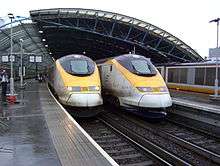
On 14 November 1994 Eurostar services began between Waterloo International station in London, Gare du Nord in Paris and Brussels South in Brussels.[27][28][29] In 1995 Eurostar was achieving an average end-to-end speed of 171.5 km/h (106.6 mph) between London and Paris.[30] On 8 January 1996 Eurostar launched services from a second railway station in the UK when Ashford International was opened.[31] Journey times between London and Brussels were reduced by the opening of HSL 1 on 14 December 1997.
The trains are based on the TGV and are British Rail Class 373.
Automobiles
The 1990s began with another recession that dampened car sales. General Motors continued to suffer huge losses thanks to an inefficient structure, stale designs, and poor quality. Sales improved with the economy by the mid-1990s, but GM's US market share gradually declined to less than 40% (from a peak of 50% in the 1970s). While the new Saturn division fared well, Oldsmobile declined sharply, and attempts to remake the division as a European-style luxury car were unsuccessful.
Cars in the 1990s had a rounder, more streamlined shape than those from the 1970s and 1980s; this style would continue early into the 2000s and to a lesser extent later on.
Chrysler ran into financial troubles again as the 1990s started. Like GM, the company too had a stale model lineup (except for the best-selling minivans) that was largely based on the aging K-car platform. In 1992, chairman Lee Iacocca retired, and the company began a remarkable revival, introducing the new LH platform and "Cab-Forward" styling, along with a highly successful redesign of the full-sized Dodge Ram in 1994. Chrysler's minivans continued to dominate the market despite increasing competition. In 1998, Daimler-Benz (the parent company of Mercedes-Benz) merged with Chrysler. The following year, it was decided to retire Plymouth, which had been on a long decline since the 1970s. Ford continued to fare well in the 1990s, with the second and third generations of the Ford Taurus being named the best selling car in the United States from 1992 to 1996. However, the Taurus would be outsold and dethroned by the Toyota Camry starting in 1997, which became the best selling car in the United States for the rest of the decade and into the 2000s. Ford also introduced the Ford Explorer, 1991 being the first model year. Fords Explorer became the best selling SUV on the market; out selling both the Chevy Blazer and Jeep Cherokee
Japanese cars continued to be highly successful during the decade. The Honda Accord vied with the Taurus most years for being the best-selling car in the United States during the early part of the decade. Although launched in 1989, the luxury brands Lexus and Infiniti began car sales of 1990 model year vehicles and saw great success. Lexus would go on to outsell Mercedes-Benz and BMW in the United States by 1991, and would outsell Cadillac and Lincoln by the end of the decade. SUVs and trucks became hugely popular during the economic boom in the second half of the decade. Many makes that had never built a truck before started selling SUVs. Car styling during the 1990s became gradually more round and ovoid, the third-generation Taurus and Mercury Sable being some of the more extreme examples. Safety features such as airbags and shoulder belts became mandatory equipment on new cars.
Science
.jpg)
- Physicists develop M-theory.
- Detection of extrasolar planets orbiting stars other than the sun.
- In the United Kingdom, the first cloned mammal, Dolly the sheep was confirmed by the Roslin Institute, and was reported by global media on 26 February 1997. Dolly would trigger a raging controversy on cloning and bioethical concerns regarding possible human cloning continue to this day.[32]
- Human Genome Project begins.
- DNA identification of individuals finds wide application in criminal law.
- Hubble Space Telescope was launched in 1990 and revolutionized astronomy. Unfortunately, a flaw in its main mirror caused it to produce fuzzy, distorted images. This was corrected by a shuttle repair mission in 1993.
- Protease inhibitors introduced allowing HAART therapy against HIV; drastically reduces AIDS mortality.
- NASA's spacecraft Pathfinder lands on Mars and deploys a small roving vehicle, Sojourner, which analyzes the planet's geology and atmosphere.
- The Hale–Bopp comet swings past the sun for the first time in 4,200 years in April 1997.
- Development of biodegradable products, replacing products made from styrofoam; advances in methods for recycling of waste products (such as paper, glass, and aluminum).
- Genetically engineered crops are developed for commercial use.
- Discovery of dark matter, dark energy, brown dwarfs, and first confirmation of black holes.
- The Galileo probe orbits Jupiter, studying the planet and its moons extensively.
- Comet Shoemaker–Levy 9 (formally designated D/1993 F2, nicknamed String of Pearls for its appearance) was a comet that broke apart and collided with Jupiter in July 1994, providing the first direct observation of an extraterrestrial collision of solar system objects..
- The Global Positioning System (GPS) becomes fully operational.
- Proof of Fermat's Last Theorem is discovered by Andrew Wiles.
- Construction started in 1998 on the International Space Station.
Environment

At the beginning of the decade, sustainable development and environmental protection became serious issues for governments and the international community. In 1987, the publication of the Brundtland Report by the United Nations had paved the way to establish an environmental governance. In 1992 the Earth Summit was held in Rio de Janeiro, in which several countries committed to protect the environment, signing a Convention on Biological Diversity.
The prevention of the destruction of the tropical rainforests of the world is a major environmental cause that first came into wide public concern in the early 1990s, and has continued and accelerated.
The Chernobyl disaster had significant impact on public opinion at the end of the 1980s, and the fallout was still causing cancer deaths well into the 1990s and possibly even into the 21st century.[33] All along the 1990s, several environmental NGOs helped improve environmental awareness among public opinion and governments. The most famous of these organizations during this decade was Greenpeace, which did not hesitate to lead illegal actions in the name of environmental preservation. These organizations also drawn attention on the large deforestion of the Amazon Rainforest during the period.
Global warming as an aspect of climate change also became a major concern, and the creation of the United Nations Framework Convention on Climate Change (UNFCCC) after the Earth Summit helped coordinate efforts to reduce carbon emissions in the atmosphere. From 1995, the UNFCCC held annual summits on climate change, leading to the adoption of the Kyoto Protocol in December 1997, a binding agreement signed by several developed countries.[34]
Society
The 1990s represented continuing social liberalization in most countries, though coupled with an increase in the influence of capitalism, which would continue until the Great Recession of the late 2000s/early 2010s.
Youth culture in the 1990s responded to this by embracing both environmentalism and entrepreneurship. Western world fashions reflected this by often turning highly individualistic and/or counter-cultural, which was influenced by Generation X and Generation Y/Millennials: tattoos and body piercing gained popularity, and "retro" styles inspired by fashions of the 1960s and 1970s were also prevalent. Some young people became increasingly involved in extreme sports and outdoor activities that combined embracing athletics with the appreciation of nature.
Those born in the 1990s are usually considered part of the Millennial Generation, along with those born in the late 1970s and 1980s. However, dates vary, with many demographers considering those born from 1995 onward as part of Generation Z, the post-Millennial generation.[35]
The slacker and Valley Girl cultures were prevalent, and the decade was heavily influenced by Californian culture.
In 1990, the World Health Organization removed homosexuality from its list of diseases. Increasing acceptance of homosexuality occurred in the western world, slowly starting in the early 1990s.[36]
Third-wave feminism

- Anita Hill and other women testify before the United States Congress on being sexually harassed by Supreme Court nominee Clarence Thomas. Thomas was narrowly confirmed by the United States Senate, but Hill's testimony, and the testimony of other harassed women, begins a national debate on the issue.
- Record numbers of women are elected to high office in the United States in 1992, the "Year of the Woman".
- Violence against women takes center stage as an important issue internationally. In the United States the Violence Against Women Act was passed, which greatly affected the world community through the United Nations. The law's author, Joe Biden, and UN Ambassador and Secretary of State Madeleine Albright, and Hillary Clinton (see below) become vocal advocates of action against violence against women.
- Women reach great heights of power in the United States government. Hillary Clinton, leading policy proposals, traveling abroad as a State Department representative to 82 nations, advising her husband, and being elected a Senator (in 2000), is the most openly empowered and politically powerful First Lady in American history; Madeleine Albright and Janet Reno take two of the cabinet's top jobs as United States Secretary of State (#1), and United States Attorney General (#4), respectively. Sheila Widnall becomes head and Secretary of the Air Force and Ruth Bader Ginsburg joins Sandra Day O'Connor as the second woman on the U.S. Supreme Court.
- More nations than ever before are led by elected women Presidents and Prime Ministers. Prime Minister Benazir Bhutto's 1988 victory in Pakistan makes women leaders in Muslim states unextraordinary. In Turkey, Tansu Çiller became the first female prime minister in 1993 (till 1996).
- In popular culture, pop group the Spice Girls also played a part in the feminist movement, boosting popularity with their slogan "Girl Power!", while country music superstar Shania Twain declared female supremacy in her 1995 hit song "Any Man of Mine."
Additional significant worldwide events
- Worldwide New Year's Eve celebrations on 31 December 1999 welcoming the year 2000.
Europe
- 1991 – Soviet Union military troops attack Lithuanian independence supporters in Vilnius, killing 14 people and wounding 1000.
- In Paris, Diana, Princess of Wales and her friend, Dodi Al-Fayed, were killed in a car accident in August 1997, when their chauffeured, hired Mercedes-Benz S-Class crashed in the Pont de l'Alma tunnel. The chauffeur, Henri Paul died at the scene, as did Al-Fayed. Diana and an Al-Fayed bodyguard, Trevor Rees-Jones, survived the accident. The Princess of Wales died at a Paris hospital hours later. The bodyguard, Rees-Jones, is the sole survivor of the now infamous accident.[37]
- Mother Teresa, the Roman Catholic nun who won the Nobel Peace Prize, dies at age 87.[38]
- The birth of the "Second Republic" in Italy, with the Mani Pulite investigations of 1994.
- The Channel Tunnel across the English Channel opens in 1994, connecting France and England. As of 2007 it is the second-longest rail tunnel in the world, but with the undersea section of 37.9 km (23.5 mi) being the longest undersea tunnel in the world.
- The resignation of President Boris Yeltsin on 31 December 1999 resulting in Prime Minister Vladimir Putin's succession to the position.
North America
- O. J. Simpson murder case – O. J. Simpson's trial, described in the United States media as the "trial of the century" and enormous United States media attention is focused on the trial. On 3 October 1995, Simpson was found "not guilty" of double-murder of ex-wife Nicole Brown Simpson and her friend, Ronald Goldman.
- With help from clinical fertility drugs, an Iowa mother, Bobbie McCaughey, gave birth to the first surviving septuplets in 1997. There followed a media frenzy and widespread support for the family.
- John F. Kennedy, Jr., his wife Carolyn Bessette and sister-in-law Lauren Bessette are killed when Kennedy's private plane crashes off the coast of Martha's Vineyard in July 1999.
- Debate on assisted suicide highly publicized by Michigan doctor Jack Kevorkian, charged with multiple counts of homicide of his terminally ill patients through the decade.
- Beer keg registration becomes popular public policy in United States
- The 500th anniversary of Christopher Columbus' discovery of the Americas in 1992 was popularly observed in the United States, despite controversy and protests against the victimization of Native Americans by Columbus' expeditions. The holiday was labeled by some as racist, in view of Native American experiences of colonialism, slavery, genocide, and cultural destruction.
- Matthew Shepard is murdered near the University of Wyoming for being gay. This sparks intense national and international media attention and outrage. He becomes a major symbol in the LGBT rights movement and the fight against homophobia.
- Shanda Sharer was murdered on 11 January 1992. She was lured away from her house and held captive by a group of teenage girls. She was tortured for hours and burned alive. She died from smoke inhalation. Those that were found guilty and sentenced to prison were Melinda Loveless, Laurie Tackett, Hope Rippey, and Toni Lawrence. According to Melinda, she was jealous of the relationship that her former partner Amanda Heavrin had with Shanda Sharer.
- Karla Homolka was arrested with her husband, Paul Bernardo in 1993. Both sexually tortured and killed their victims. Their first victim was Karla's fifteen-year-old sister Tammy Homolka. The second and third victims were Leslie Mahaffy and Kristen French. Karla told the investigators that she unwillingly did what Paul told her to do because he was abusive and was given a deal. She was sentenced to only 12 years in prison (10 years for Mahaffy and French but only 2 years for Tammy). Later, investigators discovered videotapes of the crimes which proved that Karla was a willing participant. But by that time the deal had already been made. In 1995, Paul was sentenced to life in prison. Karla was released from prison in 2005.
- Polly Klaas (3 January 1981 – October 1993) was kidnapped by Richard Allen Davis from her home during a sleepover party. She was later strangled to death. After her death, her father, Marc Klaas, established the KlaasKids Foundation.
- Jonbenet Ramsey (6 August 1990 – 25 December 1996) was a child beauty pageant contestant who was missing and found dead in her Boulder, Colorado, home. The crime horrified the nation and the world. Her parents were initially considered to be suspects in her death but were cleared in 2003 when DNA from her clothes were tested. To this day, her murderer has not been found and brought to justice.
- Lorena Bobbitt was charged with malicious wounding for severing husband John Bobbitt's penis after she was repeatedly sexually assaulted by Bobbitt, for which he was charged. Both parties were acquitted of their respective charges.
- Scandal rocked the sport of figure skating when skater Nancy Kerrigan was attacked during practice by an assailant hired by Jeff Gillooly, husband of skater Tonya Harding. The attack was carried out in attempt to injure Kerrigan's leg to the point of being unable to compete in the upcoming 1994 Winter Olympics, thereby securing Harding a better spot to win a gold medal.
Asia
- Massive immigration wave of Jews from the Commonwealth of Independent States to Israel – With the end of the Soviet Union, Israel faced a mass influx of Russian Jews, many of whom had high expectations the country was unable to meet. Israel also came under Iraqi missile attack during the Gulf War, but acquiesced to US pressure not to militarily retaliate, which could have disrupted the US-Arab alliance. The US and Netherlands then rushed anti-missile batteries to Israel to defend the country against missile attacks.
- Vizconde massacre – On 30 June 1991 Three members of the Vizconde Family: Estrellita, Carmela and Jennifer were found dead inside of their house in BF Homes, Parañaque City, Metro Manila, Philippines. it was described in the Philippines as the "trial of the century". in 2010 Hubert Webb and his men were later acquitted by the Supreme Court for failure of the prosecution to prove their guilt beyond reasonable doubt.
- The Spratly Islands issue became one of the most controversial in Southeast Asia.
- The closing Mass of the X World Youth Day 1995 was held in Rizal Park on 15 January 1995, attended by more than 5 million people. This is the record gathering of the Roman Catholic Church.
- The Philippines celebrates the 100th Anniversary of Philippine Independence in 1998 with its theme: "Kalayaan: Kayamanan ng Bayan".
Popular culture
Film

Dogme 95 becomes an important European artistic motion picture movement by the end of the decade. The first full-length CGI movie, Pixar's Toy Story, is released, revolutionizing animated films. Titanic becomes a cultural phenomenon throughout the world, and eventually becomes the highest-grossing film of all time, grossing over $1.8 billion worldwide. It would hold this record for over a decade until 2010 when director James Cameron had another one of his films take the title, that being Avatar.[39]
Family animated feature films gained mainstream popularity during the decade. Films produced by Walt Disney Feature Animation became popular once more when the studio returned to making family traditionally animated musical classic films, most notable films were Aladdin, The Lion King and Pocahontas. This era was known as the Disney Renaissance. In 1994, former Disney employee Jeffrey Katzenberg founded DreamWorks SKG which would produce its first two family animated films The Prince of Egypt and Antz. Don Bluth's animation studio, however, wasn't having great times due to the underperfomance of their family animated films such as Rock-a-Doodle, Thumbelina and The Pebble and the Penguin. Other family animated films have also gained cult status such as An American Tail: Fievel Goes West, Ferngully: The Last Rainforest, Tom and Jerry: The Movie, The Thief and the Cobbler, Batman: Mask of the Phantasm, The Swan Princess, Balto, Beavis and Butt-Head Do America, Cats Don't Dance, The Iron Giant and South Park: Bigger, Longer, Uncut.
The Prince of Egypt is the first and only DreamWorks Animation traditional cel animated film to not even be distributed theatrically by 20th Century Fox Film Corporation.
Live-action films featuring computer-animated characters became popular with films such as Casper, 101 Dalmatians, and Stuart Little, although live-action/traditional cel animated film featuring traditional characters like the blockbuster release The Pagemaster and Space Jam were also prevalent.
Japanese anime films continued in the 1990s as Studio Ghibli's continued to dominate with films such as Porco Rosso, Pom Poko, Whisper of the Heart and Princess Mononoke which became the highest-grossing anime film at the time. Other anime films which gained cult status include Roujin Z, Street Fighter II: The Animated Movie, Ghost in the Shell, Memories, Perfect Blue, and the first film in Pokemon film series, Pokemon: The First Movie.
Award winners
Highest-grossing
The 25 highest-grossing films of the decade are:[60]
| No. | Title | Year | Box office |
|---|---|---|---|
| 1 | Titanic | 1997 | $1,850,197,130 |
| 2 | Star Wars: Episode I – The Phantom Menace | 1999 | $924,305,084 |
| 3 | Jurassic Park | 1993 | $912,667,947 |
| 4 | Independence Day | 1996 | $817,400,891 |
| 5 | The Lion King | 1994 | $763,455,561 |
| 6 | Forrest Gump | 1994 | $677,387,716 |
| 7 | The Sixth Sense | 1999 | $672,806,292 |
| 8 | The Lost World: Jurassic Park | 1997 | $618,638,999 |
| 9 | Men in Black | 1997 | $589,390,539 |
| 10 | Armageddon | 1998 | $553,709,788 |
| 11 | Terminator 2: Judgment Day | 1991 | $516,950,043 |
| 12 | Ghost | 1990 | $505,702,588 |
| 13 | Aladdin | 1992 | $504,050,219 |
| 14 | Twister | 1996 | $494,471,524 |
| 15 | Toy Story 2 | 1999 | $487,059,677 |
| 16 | Saving Private Ryan | 1998 | $481,840,909 |
| 17 | Home Alone | 1990 | $476,684,675 |
| 18 | The Matrix | 1999 | $463,517,383 |
| 19 | Pretty Woman | 1990 | $463,406,268 |
| 20 | Mission: Impossible | 1996 | $457,696,391 |
| 21 | Tarzan | 1999 | $448,191,819 |
| 22 | Mrs. Doubtfire | 1993 | $441,286,195 |
| 23 | Dances with Wolves | 1990 | $424,208,848 |
| 24 | The Mummy | 1999 | $415,933,406 |
| 25 | The Bodyguard | 1992 | $410,945,720 |
Actors / Entertainers
- Jason Alexander
- Tim Allen
- Kirstie Alley
- Gillian Anderson
- Harry Anderson
- Pamela Anderson
- Jennifer Aniston
- Christina Applegate
- Patricia Arquette
- Alan Arkin
- James Avery
- Dan Aykroyd
- Kevin Bacon
- Diedrich Bader
- Alec Baldwin
- Christian Bale
- Antonio Banderas
- Roseanne Barr
- Drew Barrymore
- Kim Basinger
- Angela Bassett
- Jason Bateman
- Kathy Bates
- Sean Bean
- Amanda Bearse
- Ned Beatty
- Richard Belzer
- Annette Bening
- Candice Bergen
- Elizabeth Berkley
- Crystal Bernard
- Sandra Bernhard
- Halle Berry
- Roberto Benigni
- Tom Berenger
- Mayim Bialik
- Jack Black
- Ernest Borgnine
- Lara Flynn Boyle
- Jonathan Brandis
- Benjamin Bratt
- Andre Braugher
- Jeff Bridges
- Matthew Broderick
- Pierce Brosnan
- Clancy Brown
- Zachery Ty Bryan
- Sandra Bullock
- Steve Buscemi
- Nicolas Cage
- Dean Cain
- Michael Caine
- Bruce Campbell
- Neve Campbell
- John Candy
- Drew Carey
- David Carradine
- Jim Carrey
- Helena Bonham Carter
- Gabrielle Carteris
- Jim Caviezel
- Lacey Chabert
- Jackie Chan
- Chevy Chase
- Don Cheadle
- Michael Chiklis
- Thomas Haden Church
- John Cleese
- George Clooney
- Glenn Close
- James Coburn
- Sean Connery
- Rachael Leigh Cook
- Bill Cosby
- Kevin Costner
- Dave Coulier
- Courteney Cox
- Bryan Cranston
- Russell Crowe
- Tom Cruise
- Billy Crystal
- Penélope Cruz
- Ice Cube
- Macaulay Culkin
- Jamie Lee Curtis
- John Cusack
- Willem Dafoe
- Tim Daly
- Matt Damon
- Jeff Daniels
- William Daniels
- Ted Danson
- Tony Danza
- Robert Davi
- Geena Davis
- Daniel Day-Lewis
- Ellen DeGeneres
- Benicio del Toro
- Judi Dench
- Brian Dennehy
- Robert De Niro
- Johnny Depp
- Bruce Dern
- Laura Dern
- Danny DeVito
- Dustin Diamond
- Cameron Diaz
- Leonardo DiCaprio
- Matt Dillon
- Shannen Doherty
- Michael Douglas
- Robert Downey Jr.
- Fran Drescher
- Richard Dreyfuss
- Minnie Driver
- David Duchovny
- Patrick Duffy
- Michael Clarke Duncan
- Debbe Dunning
- Kirsten Dunst
- Robert Duvall
- Clint Eastwood
- Anthony Edwards
- Jenna Elfman
- Sam Elliott
- R. Lee Ermey
- Shelley Fabares
- Dennis Farina
- Chris Farley
- David Faustino
- Corey Feldman
- Craig Ferguson
- Will Ferrell
- Sally Field
- Ralph Fiennes
- Laurence Fishburne
- Danielle Fishel
- Calista Flockhart
- Dave Foley
- Bridget Fonda
- Peter Fonda
- Harrison Ford
- Robert Forster
- Jodie Foster
- Matthew Fox
- Michael J. Fox
- Jamie Foxx
- Dennis Franz
- Brendan Fraser
- Morgan Freeman
- James Gandolfini
- Andy García
- Janeane Garofalo
- Jennie Garth
- Sarah Michelle Gellar
- Richard Gere
- Mel Gibson
- Thomas Gibson
- Kathie Lee Gifford
- Peri Gilpin
- Danny Glover
- Whoopi Goldberg
- Jeff Goldblum
- Cuba Gooding Jr.
- John Goodman
- Mark-Paul Gosselaar
- Kelsey Grammer
- Hugh Grant
- Brian Austin Green
- Bruce Greenwood
- Pam Grier
- Melanie Griffith
- Gene Hackman
- Corey Haim
- Tom Hanks
- Woody Harrelson
- Ed Harris
- Phil Hartman
- Steve Harvey
- Dennis Haskins
- David Hasselhoff
- Teri Hatcher
- Rutger Hauer
- Ethan Hawke
- Patricia Heaton
- Lance Henriksen
- Charlton Heston
- Jennifer Love Hewitt
- Dustin Hoffman
- Philip Seymour Hoffman
- Ian Holm
- Anthony Hopkins
- Dennis Hopper
- Ernie Hudson
- Helen Hunt
- John Hurt
- Jeremy Irons
- Kevin James
- Samuel L. Jackson
- James Earl Jones
- Tommy Lee Jones
- Scarlett Johansson
- Angelina Jolie
- Ashley Judd
- Richard Karn
- Michael Keaton
- Harvey Keitel
- Nicole Kidman
- Val Kilmer
- Ben Kingsley
- Kathy Kinney
- Jane Krakowski
- Lisa Kudrow
- Jessica Lange
- Angela Lansbury
- Hugh Laurie
- Jude Law
- Lucy Lawless
- Joey Lawrence
- Martin Lawrence
- John Larroquette
- Eriq LaSalle
- Denis Leary
- Matt LeBlanc
- Jane Leeves
- John Leguizamo
- Jay Leno
- David Letterman
- Eugene Levy
- Jet Li
- Matthew Lillard
- Ray Liotta
- John Lithgow
- Lucy Liu
- Heather Locklear
- Mario Lopez
- Traci Lords
- Lori Loughlin
- Julia Louis-Dreyfus
- Jon Lovitz
- Rob Lowe
- Dolph Lundgren
- Matthew McConaughey
- Bernie Mac
- William H. Macy
- Michael Madsen
- John Malkovich
- Joe Mantegna
- Julianna Margulies
- Kellie Martin
- Steve Martin
- Dylan McDermott
- Ewan McGregor
- Danica McKellar
- Ian McKellen
- Laurie Metcalf
- Christa Miller
- Helen Mirren
- Demi Moore
- Julianne Moore
- Tracy Morgan
- Viggo Mortensen
- Richard Mulligan
- Brittany Murphy
- Eddie Murphy
- Bill Murray
- Mike Myers
- Liam Neeson
- Sam Neill
- Paul Newman
- Leslie Nielsen
- Craig T. Nelson
- Jack Nicholson
- Nick Nolte
- Chuck Norris
- Edward Norton
- Chris Noth
- Conan O'Brien
- Rosie O'Donnell
- Gary Oldman
- Edward James Olmos
- Ed O'Neill
- Jerry Orbach
- Al Pacino
- Gwyneth Paltrow
- Anna Paquin
- Sarah Jessica Parker
- Robert Patrick
- Bill Paxton
- Sean Penn
- Luke Perry
- Matthew Perry
- Joe Pesci
- Michelle Pfeiffer
- River Phoenix
- Regis Philbin
- David Hyde Pierce
- Brad Pitt
- Jeremy Piven
- Christopher Plummer
- Natalie Portman
- Parker Posey
- Kelly Preston
- Jason Priestley
- Freddie Prinze Jr.
- Jonathan Pryce
- Dennis Quaid
- Queen Latifah
- James Rebhorn
- Robert Redford
- Keanu Reeves
- Paul Reiser
- Burt Reynolds
- Ving Rhames
- Alfonso Ribeiro
- Michael Richards
- Patricia Richardson
- Alan Rickman
- Eric Roberts
- Julia Roberts
- Chris Rock
- Tim Robbins
- Ray Romano
- Tim Roth
- Paul Rudd
- Kurt Russell
- Rene Russo
- Meg Ryan
- Winona Ryder
- Katey Sagal
- Bob Saget
- Adam Sandler
- Susan Sarandon
- Ben Savage
- Fred Savage
- Rob Schneider
- Arnold Schwarzenegger
- David Schwimmer
- Steven Seagal
- Jerry Seinfeld
- Tom Selleck
- Tony Shalhoub
- Garry Shandling
- Charles Shaughnessy
- Wallace Shawn
- Charlie Sheen
- Martin Sheen
- Martin Short
- Alicia Silverstone
- J. K. Simmons
- Gary Sinise
- Christian Slater
- Will Smith
- Taran Noah Smith
- Jimmy Smits
- Wesley Snipes
- Suzanne Somers
- Kevin Sorbo
- Kevin Spacey
- David Spade
- Tori Spelling
- John Stamos
- Sylvester Stallone
- Jason Statham
- Mary Steenburgen
- Patrick Stewart
- Ben Stiller
- Ryan Stiles
- Sharon Stone
- Meryl Streep
- Sherry Stringfield
- Donald Sutherland
- Kiefer Sutherland
- Patrick Swayze
- Jeffrey Tambor
- Alan Thicke
- Tiffani Thiessen
- Jonathan Taylor Thomas
- Emma Thompson
- Lea Thompson
- Billy Bob Thornton
- Uma Thurman
- Maura Tierney
- Marisa Tomei
- Lily Tomlin
- Rip Torn
- John Travolta
- Danny Trejo
- Chris Tucker
- John Turturro
- Liv Tyler
- Jean-Claude Van Damme
- Dick Van Dyke
- Jim Varney
- Reginald VelJohnson
- Jon Voight
- Lark Voorhees
- Mark Wahlberg
- Christopher Walken
- Paul Walker
- Denzel Washington
- Sam Waterston
- Sigourney Weaver
- Steven Weber
- Forest Whitaker
- Jaleel White
- Betty White
- Robin Williams
- Bruce Willis
- Luke Wilson
- Oprah Winfrey
- Henry Winkler
- Kate Winslet
- Reese Witherspoon
- Scott Wolf
- Elijah Wood
- James Woods
- Robin Wright
- Noah Wyle
- Sean Young
- Renée Zellweger
- Ian Ziering
Filmmakers
Music
_56.jpg)


The 1990s were a decade that saw marketing become more segmented, as MTV gradually shifted away from music videos beginning in 1992 and radio splintered into narrower formats aimed at different niches.[61][62][63][64] However, they are perhaps best known for grunge, gangsta rap, R&B, teen pop; eurodance, electronic dance music, the renewed popularity of punk rock mainly because of the band Green Day (which would also help create a new genre pop punk) and for being the decade that alternative rock became mainstream. U2 was one of the most popular 1990s bands, their groundbreaking Zoo TV and PopMart tours were the top selling tours of 1992 and 1997. Glam metal dies out through its own accord in the music mainstream by 1991.[65] Grunge became popular in the early 90s due to the success of Nirvana's Nevermind, Pearl Jam's Ten, Alice in Chains' Dirt and Soundgarden's Badmotorfinger.[66] Pop punk also becomes popular with such artists as Green Day, Blink-182, Weezer, Social Distortion, the Offspring, Bad Religion, NOFX and Rancid.[67] Other successful alternative acts included Red Hot Chili Peppers, R.E.M., Nickelback, Creed, Radiohead, Gin Blossoms, Soul Asylum, Third Eye Blind, Stone Temple Pilots, Faith No More, the Smashing Pumpkins, Live, Everclear, Bush, Screaming Trees and Ween.[68]
Dr. Dre's 1992 album The Chronic provided a template for modern gangsta rap.[69] Due to the success of Death Row Records, West Coast gangsta rap commercially dominated hip hop during the early 1990s, along with the Notorious B.I.G. on the East Coast.[70] Hip hop became the best selling music genre by the mid-1990s.[71][72]
In the United Kingdom, the uniquely British alternative rock Britpop genre emerged as part of the more general Cool Britannia culture, with Oasis, Blur, Pulp, Suede, Supergrass and Elastica. The impact of boy band pop sensation Take That lead to the formation of other boy bands in the UK and Ireland such as East 17 and Boyzone. Female pop icons Spice Girls took the world by storm, becoming the most commercially successful British group since the Beatles, the Rolling Stones and Led Zeppelin.[73][74] Their global success brought about a widespread scene of teen pop acts around the world[75][76] such as All Saints, Backstreet Boys, Hanson, N Sync, Britney Spears and Christina Aguilera who came to prominence into the new millennium.[77] 1991 also saw the death of Queen frontman Freddie Mercury from AIDS-related pneumonia.
Contemporary R&B and quiet storm continued in popularity among adult audiences, which began during the 1980s. Popular American contemporary R&B artists included Celine Dion, Mariah Carey, D'Angelo, Lauryn Hill, Whitney Houston, Brandy, Sade, En Vogue, TLC, Destiny's Child, Toni Braxton, Boyz II Men, Dru Hill and Vanessa L. Williams.
The Tibetan Freedom Concert brought 120,000 people together in the interest of increased human rights and autonomy for Tibet from China. Freddie Mercury, Kurt Cobain, Selena, Tupac Shakur and the Notorious B.I.G. are the most publicized music-related deaths of the decade, in 1991, 1994, 1995, 1996, and 1997 respectively.
Richey Edwards of Manic Street Preachers was publicized in the media in 1991 following an incident involving Steve Lamacq backstage after a live show, in which Edwards carved '4 Real' into his arm. Edwards disappeared in 1995, which was highly publicized. He is still missing, but was presumed dead in 2008.
Controversy surrounded the Prodigy with the release of the track "Smack My Bitch Up". The National Organization for Women (NOW) claimed that the track was "advocating violence against women" due to the lyrics of that song. The music video (directed by Jonas Åkerlund) featured a first-person POV of someone going clubbing, indulging in drugs and alcohol, getting into fist fights, abusing women and picking up a prostitute. At the end of the video the camera pans over to a mirror, revealing the subject to be a woman.
1994 became a breakthrough year for punk rock in California, with the success of bands like Bad Religion, Social Distortion, Blink-182, Green Day, the Offspring, Rancid and similar groups following. This success would continue to grow over the next decade, the 2000s. The 1990s also became the most important decade for ska punk/reggae rock, with the success of many bands like Buck-O-Nine, Goldfinger, Less Than Jake, the Mighty Mighty Bosstones, Murphy's Law, No Doubt, Reel Big Fish, Save Ferris, Sublime and Sugar Ray.
The rave movement that emerged in the late 1980s rose. Rave spawned genres such as Intelligent dance music and Drum and bass. The latter is an offshoot of jungle techno and breakbeat. Popular artists included Moby, Fatboy Slim, Björk, Aphex Twin, Orbital, the Orb, the Chemical Brothers, Basement Jaxx, Todd Terry, 808 State, Primal Scream, the Shamen, the KLF and the Prodigy.
The rise of industrial music, somewhat a fusion of synthpop and heavy metal, rose to worldwide popularity with bands like Godflesh, Nine Inch Nails, Rammstein, Ministry and Marilyn Manson. Groove metal was born through the efforts of Pantera, whose seventh studio album Far Beyond Driven (1994) was notable for going number one on Billboard 200. Another heavy metal subgenre called nu metal, which mixed metal with hip hop influences, becomes popular with bands like Korn, Slipknot and Limp Bizkit selling millions of albums worldwide. Metallica's 1991 eponymous album Metallica is the best-selling album of the SoundScan era, while extreme metal acts such as Death, Mayhem, Darkthrone, Emperor, Cannibal Corpse and others experienced popularity throughout the decade.
In the 1990s, country music became a worldwide phenomenon thanks to Billy Ray Cyrus, Shania Twain and Garth Brooks.[78][79][80] The latter enjoyed one of the most successful careers in popular music history, breaking records for both sales and concert attendance throughout the decade. The RIAA has certified his recordings at a combined (128× platinum), denoting roughly 113 million United States shipments.[81] Other artists that experienced success during this time included Clint Black, Sammy Kershaw, Aaron Tippin, Travis Tritt, Suzy Bogguss, Alan Jackson, Lorrie Morgan and the newly formed duo of Brooks & Dunn; George Strait, whose career began in the 1980s, also continued to have widespread success in this decade and beyond. Female artists such as Reba McEntire, Faith Hill, Martina McBride, Deana Carter, LeAnn Rimes and Mary Chapin Carpenter all released platinum selling albums in the 1990s. The Dixie Chicks became one of the most popular country bands in the 1990s and early 2000s. Their 1998 debut album Wide Open Spaces went on to become certified 12x platinum while their 1999 album Fly went on to become 10x platinum.
Musicians and bands
- Nirvana
- Kylie Minogue
- Mariah Carey
- Britney Spears
- Celine Dion
- Natalie Imbruglia
- Spice Girls
- Madonna
- Michael Jackson
- MC Hammer
- Coolio
- Tupac Shakur
- The Notorious B.I.G.
- Dr. Dre
- Snoop Dogg
- Jay-Z
- Shaggy
- Eminem
- Nas
- DJ BoBo
- Alexia
- Ice MC
- Corona
- Rednex
- Cappella
- Maxx
- Debbie Gibson
- Martika
- Whigfield
- Technotronic
- Backstreet Boys
- NSYNC
- New Kids on the Block
- Rage Against the Machine
- Red Hot Chili Peppers
- Take That
- East 17
- Enya
- Enigma
- Sarah Brightman
- UB40
- Vaya Con Dios
- 4 Non Blondes
- Soul Asylum
- Alanis Morissette
- Sheryl Crow
- Faith Evans
- Lisa Stansfield
- Neneh Cherry
- Donna Lewis
- Paula Abdul
- Jennifer Paige
- TLC
- All Saints
- En Vogue
- Fugees
- Skunk Anansie
- Faithless
- Ace of Base
- Masterboy
- Culture Beat
- La Bouche
- Dr. Alban
- Haddaway
- Moby
- Real McCoy
- Reel 2 Real
- Prince Ital Joe
- Soundgarden
- Radiohead
- Smashing Pumpkins
- Red Hot Chili Peppers
- Creed
- Beastie Boys
- Nickelback
- Pearl Jam
- Salt-N-Pepa
- Ricky Martin
- Enrique Iglesias
- Daft Punk
- Massive Attack
- Boyz II Men
- R.E.M.
- Gloria Estefan
- Shania Twain
- Sarah McLachlan
- Cher
- Selena
- Courtney Love
- Tina Cousins
- Tori Amos
- Vanilla Ice
- The Offspring
- Army of Lovers
- Wilson Phillips
- Moloko
- Garbage
- The Cardigans
- The Corrs
- The Cranberries
- Metallica
- Guns N' Roses
- U2
- Björk
- Fatboy Slim
- Underworld
- The Chemical Brothers
- The Rembrandts
- The Kelly Family
- Savage Garden
- Alice Deejay
- 2 Unlimited
- 2 Brothers on the 4th Floor
- Mr. President
- No Mercy
- Everything but the Girl
- Eagle-Eye Cherry
- Loft
- Lenny Kravitz
- Robbie Williams
- Christina Aguilera
- Seal
- Puff Daddy
- Oasis
- Roxette
- Andrea Bocelli
- Amber
- George Michael
- Phil Collins
- Whitney Houston
- Blur
- Blink-182
- Green Day
- Janet Jackson
- Elton John
- Eric Clapton
- Magic Affair
- Meat Loaf
- Aerosmith
- Sash!
- Scooter
- Twenty 4 Seven
- Captain Hollywood Project
- Captain Jack
- Spin Doctors
- Sting
- Duran Duran
- The Cranberries
- R. Kelly
- The Verve
- Bon Jovi
- Depeche Mode
- Bryan Adams
- Scorpions
- Jeff Buckley
- Portishead
- Nine Inch Nails
- Wu-Tang Clan
- Megadeth
- Slipknot
- Korn
- Marilyn Manson
- Alice in Chains
- Aqua
- Destiny's Child
- Pantera
- Urban Cookie Collective
- Jamiroquai
- Right Said Fred
- Sinéad O'Connor
- Sophie B. Hawkins
- Boyzone
- Snap!
- Sade
- Pet Shop Boys
- Beck
- Fun Factory
- No Doubt
- The Prodigy
- Toni Braxton
- Prince
- Jam & Spoon
- Scatman John
- ATB
- Paul Oakenfold
- Paul van Dyk
- Marusha
- WestBam
- Vengaboys
- Eiffel 65
- Matchbox 20
- Chumbawamba
- Aaliyah
- Utada Hikaru
- Ayumi Hamasaki
- Namie Amuro
- Dreams Come True
- Every Little Thing
- m-flo
- TM Network
- T.M.Revolution
- Mr. Children
- SMAP
- V6
- L'Arc-en-Ciel
Television
TV shows, mostly sitcoms, were popular with the American audience. Series such as Roseanne, Coach, Empty Nest, Mr. Belvedere, 227, Cheers, The Cosby Show, Growing Pains, Night Court, The Hogan Family, A Different World, Amen, ALF, Perfect Strangers, Family Matters, Charles in Charge, Saved by the Bell, My Two Dads, Newhart, Dear John, Designing Women, The Golden Girls, Who's the Boss?, Head of the Class, and Seinfeld, which premiered in the eighties, and Frasier, a spin-off of the 1980s hit Cheers were viewed throughout the 1990s. These sitcoms, along with Friends, That '70s Show, Ellen, The Fresh Prince of Bel-Air, Full House, Nurses, Murphy Brown, The Wonder Years, Living Single, Step by Step, NewsRadio, Blossom, The King of Queens, Major Dad, Fired Up, Jesse, Parker Lewis Can't Lose, For Your Love, The Steve Harvey Show, The Larry Sanders Show, Sex and the City, Arliss, Dream On, Grace Under Fire, Mad About You, Sabrina the Teenage Witch, The Naked Truth, The Jeff Foxworthy Show, The Jamie Foxx Show, Smart Guy, The Wayans Bros., Malcolm & Eddie, Clueless, Moesha, The Parent 'Hood, Unhappily Ever After, Roc, Martin, Hangin' with Mr. Cooper, Sister, Sister, Boy Meets World, Ned and Stacey, Becker, Veronica's Closet, Two Guys and a Girl, The Drew Carey Show, Wings, The John Larroquette Show, Caroline in the City, Sports Night, Home Improvement, Will & Grace, Married... with Children, Evening Shade, Cosby, Spin City, The Nanny, 3rd Rock from the Sun, Suddenly Susan, Cybill, Just Shoot Me!, Everybody Loves Raymond, and Dharma and Greg turned TV in new directions and defined the humor of the decade.
In early 1993, one of the last westerns ever to air on television was Walker, Texas Ranger, a crime drama which also starred Chuck Norris as the title character. Lasting for 9 seasons, the show tackled a wide variety of subjects, and was one of the few shows ever to perform karate.
1993 also saw its debut of the medical–mystery drama, Diagnosis Murder, a comeback vehicle for Dick Van Dyke, who guest-starred on an episode of its sequel, Jake and The Fatman, where the show got off to a rocky start, and became one of television's long-running mysteries, that lasted until its cancelation in 2001.
Medical dramas started to come into television in the '90s. One show stood out as a critical and ratings success for NBC. In 1994, ER, which starred Anthony Edwards, Noah Wyle and George Clooney, was a domestic and international success, lasting until 2009 and spawning series such as Grey's Anatomy (2005–present). It made NBC the most watched channel in the United States. This show launched the career of George Clooney. That same year, Chicago Hope, that starred Héctor Elizondo, Mandy Patinkin and Adam Arkin, was also a popular series for CBS, lasting between 1994 and 2000.
Beverly Hills, 90210 ran on Fox from 1990 to 2000. It established the teen soap genre paving the way for Dawson's Creek, Felicity, and other shows airing in later years. The show was then remade and renamed simply 90210 and premiered in 2008. Beverly Hills, 90210 spun-off Melrose Place, a popular TV show that dominated throughout the '90s as well. Baywatch, a popular TV show that dominated throughout the '90s, became the most watched TV show in history and influenced pop culture.
Sex and the City's frank portrayal of relationships and sexuality caused controversy and acclaim, leading to a new generation of sexually progressive television shows that would be seen in the 2000s.
The fantasy and science fiction was popular on television, with NBC airing seaQuest DSV beginning in 1993, This series is a Steven Spielberg production, made Jonathan Brandis popular teen idol, but after three seasons it was canceled.Touched By an Angel, broadcast by CBS in 1994. The series was intended as the comeback vehicle of Della Reese, and also launched the career of Roma Downey. It wasn't an immediate hit, and was canceled the following year, but revived the following year, thanks to die hard fans who approached a letter-writing campaign, where it ran for 8 more seasons.
Crime drama and police detective shows returned after soap-operas died down. After the successful debuts of Law & Order, NYPD Blue and Homicide: Life on the Street, Nash Bridges, a comeback vehicle for Don Johnson, lasting 6 seasons (1996–2001) which also dealt with escapist entertainment, rather than tackling issues.[82]
Reality television began on MTV; this would grow in importance in the western world into the next decade.
During the mid-1990s, two of the biggest professional wrestling companies: World Championship Wrestling and World Wrestling Federation were in a ratings battle that was dubbed the Monday Night Wars (1995–2001). Each company fought to draw more viewers to their respective Monday night wrestling show. The "War" ended in 2001 when WWE bought WCW. In November 2001, there was a Winner Takes All match with both companies in a Pay-Per-View called Survivor Series. WWF won the match; putting a final end to WCW.
As an animated sitcom, The Simpsons, debuted in December 1989, became a domestic and international success in the 1990s. The show has aired more than 600 episodes and has become an institution of pop culture. It has spawned the adult-oriented animated sitcom genre, inspiring racier shows such as Beavis and Butt-head (1993–1997), Daria (1997–2001), along with South Park and Family Guy, the latter two of which began in 1997 and 1999 respectively and continue to air new episodes through the 2000s and into the 2010s.
Anime was popular in the 1980s, and expanded to a worldwide audience by the 1990s, for its expansive spectrum of story subjects and themes not limited to comedy and superhero action found in the US, and well produced, and well written, visual and story content, that held emotional and intellectual depth and integrity to its viewers, and which also expanded to older and adult ages in the medium of animation. TV shows such as Sailor Moon, Digimon, Pokémon, Tenchi Muyo!, Dragon Ball Z, Gundam Wing, Neon Genesis Evangelion, Ranma 1/2, Dirty Pair, Slayers, Rurouni Kenshin, Initial D, Gunsmith Cats, to anime movies such as Akira, Vampire Hunter D, My Neighbor Totoro, Princess Mononoke, Castle in the Sky, The Castle of Cagliostro, and imports by various distributors such as Viz, AnimEigo, Central Park Media, A.D. Vision, Pioneer Entertainment, Media Blasters, Manga Entertainment, and Celebrity, helped begin the mid to late 1990s and early to mid-1900s introductory anime craze in the US, and the Cartoon Network anime block Toonami in 1997.
Nickelodeon's first animated series (Doug, Rugrats, The Ren & Stimpy Show) debuted in 1991. One of Nickelodeon's most popular and longest running series, SpongeBob SquarePants, started in 1999 and became a huge success.
American animated children's programs went through a renaissance during the decade with studios producing many critically acclaimed shows. Specifically Warner Bros Animation shows like Tiny Toon Adventures, Animaniacs, Batman: The Animated Series, and Superman: The Animated Series. Also syndicated shows like Phantom 2040.
The late 90s also saw the evolution of a new TV genre: primetime game shows, popularized by the game show Who Wants to Be a Millionaire?, hosted by Regis Philbin on ABC, as well as other first-run game shows aired in primetime on the newly launched Game Show Network.
Fashion

Significant fashion trends of the 1990s include:
- The Rachel, Jennifer Aniston's hairstyle on the hit show Friends, became a cultural phenomenon with millions of women copying it worldwide.
- The Curtained Haircut increased in popularity in fashion and culture among teenage boys and young men in the 1990s, mainly after it was popularized in the film Terminator 2: Judgment Day by the actor Edward Furlong.
- The model 1300 Wonderbra style has a resurgence of popularity in Europe in 1992 which kicks off a multinational media sensation, the 1994 re-introduction of "The Wonderbra" brand, and a spike in push-up, plunge bras around the world.
- Additional fashion trends of the 1990s include the Tamagotchi, Rollerblades, Pogs and Dr. Martens shoes.
- Bleached Blond hair became very popular in the late '90s, as was men with short hair with the bangs "flipped up".
- The 1990s also saw the return of '70s teen female fashion with long, straight hair and denim hot pants.
- Beverly Hills 90210 sideburns also became popular in the early and mid-1990s.
- Slap bracelets were a popular fad among children, pre-teens and teenagers in the early 1990s and were available in a wide variety of patterns and colors. Also, popular among children were light-up sneakers, jelly shoes, and shoelace hair clips.
- The Grunge hype at the beginning of the decade popularized flannel shirts among both sexes during the 1990s.
 The handheld digital pet device Tamagotchi became an especially popular game among children around the world during the decade
The handheld digital pet device Tamagotchi became an especially popular game among children around the world during the decade Pogs was an especially popular game among children around the world during the decade
Pogs was an especially popular game among children around the world during the decade In the 90s Dr. Martens shoes became a popular fashionable item heavily influenced by the grunge scene and the prominent grunge musicians who wore them
In the 90s Dr. Martens shoes became a popular fashionable item heavily influenced by the grunge scene and the prominent grunge musicians who wore them
Video games
Popular notable video games of the 1990s include: Metal Gear Solid, Super Mario World, Doom (1993 video game), Donkey Kong Country, Pokémon Red and Blue Versions, Pokémon Yellow Version, GoldenEye 007, Super Mario 64, The Legend of Zelda: Ocarina of Time, Gran Turismo, Mario Kart 64, Half-Life, Super Mario Kart, Star Fox series, Tomb Raider series, Final Fantasy, Sonic the Hedgehog series, Crash Bandicoot series, Resident Evil series, Street Fighter II, Spyro the Dragon series, Commander Keen series, Test Drive series, Monkey Island series, Dune series, Mortal Kombat series, Warcraft series, Duke Nukem 3D, Tekken series, EarthBound, Fallout: A Post Nuclear Role Playing Game, and StarCraft.
Sony's PlayStation becomes the top selling game console and changes the standard media storage type from cartridges to compact discs in consoles. Crash Bandicoot is released on 9 September 1996, becoming one of the most successful platforming series for the Sony PlayStation. Tomb Raider's (PlayStation) Lara Croft became a video game sex symbol, becoming a recognizable figure in the entertainment industry throughout the late 1990s.
3-D graphics become the standard by end of decade. Although FPSs had long since seen the transition to full 3D, other genres begin to copy this trend by the end of the decade. Most notable first shooter games in the 1990s are GoldenEye 007 and Tom Clancy's Rainbow Six.
The console wars, primarily between Sega (Mega Drive, marketed as the Sega Genesis in North America, introduced in 1988) and Nintendo (Super NES, introduced in 1990), sees the entrance of Sony with the PlayStation in 1994, which becomes the first successful CD-based console (as opposed to cartridges). By the end of the decade, Sega's hold on the market becomes tenuous after the end of the Saturn in 1999 and the Dreamcast in 2002.
Mario as Nintendo's mascot finds a rival in Sega's Sonic the Hedgehog with the release of Sonic the Hedgehog on the Genesis in 1991.
Arcade games rapidly decrease in popularity.[83]
Fighting games like Capcom's Street Fighter II, Sega's futuristic Virtua Fighter, and especially the more violent Mortal Kombat from Midway prompted the video game industry to adopt a game rating system. Hundreds of knock-offs are widely popular in the mid-to-late 1990s. Doom (1993) bursts onto the world scene, and instantly popularizes the FPS genre. Half-Life (1998) features the next evolutionary step in the genre with continual progression of the game (no levels in the traditional sense) and an entirely in-person view, and becomes one of the most popular computer games in history.
The real-time strategy (RTS) genre is introduced in 1992 with the release of Dune II. Warcraft: Orcs & Humans (1994) popularizes the genre, with Command & Conquer and Warcraft II: Tides of Darkness in 1995, setting up the first major real-time strategy competition and popularizing multiplayer capabilities in RTS games. StarCraft in 1998 becomes the second best-selling computer game of all time. It remains among the most popular multiplayer RTS games to this day, especially in South Korea. Homeworld in 1999 becomes the first successful 3d RTS game. The rise of the RTS genre is often credited with the fall of the turn-based strategy (TBS) genre, popularized with Civilization in 1991. Final Fantasy debuted (in North America) in 1990 for the NES, and remains among the most popular video game franchises, with many new titles to date and more in development, plus numerous spin-offs, sequels, films and related titles. Final Fantasy VII, released in 1997, especially popularized the series.
Massively multiplayer online role-playing games (MMORPGs) see their entrance into the computer game world with Ultima Online in 1997, although they don't gain widespread popularity until EverQuest and Asheron's Call in 1999. MMORPGs go on to become among the most popular genres in the first decade of the 21st century.
Pokémon enters the world scene with the release of the original Game Boy Pokémon Red and Pokémon Green games in Japan in 1996, later changed to Pokémon Red and Pokémon Blue for worldwide release in 1998. It soon becomes popular in the United States, spurring the term Pokémania and is adapted into a popular anime series and trading card game, among other media forms.
Resident Evil is released in 1996. It becomes the most popular survival-horror series in video gaming well into the next decade and inspires several films.
Crash Bandicoot is released in September 1996, becoming an innovative platformer for the PlayStation.
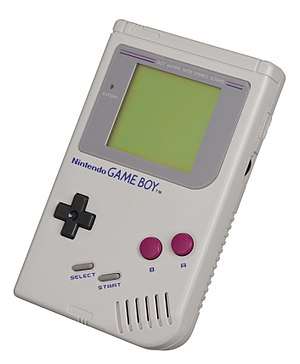 Nintendo's Game Boy was a popular handheld game console during the 1990s.
Nintendo's Game Boy was a popular handheld game console during the 1990s. The PlayStation was released in the mid-1990s and became the best-selling gaming console of its time.
The PlayStation was released in the mid-1990s and became the best-selling gaming console of its time..jpg) The game Tomb Raider, launched in 1996, became particularly popular during the decade and as a result Lara Croft's character eventually became a cultural icon in the video game industry
The game Tomb Raider, launched in 1996, became particularly popular during the decade and as a result Lara Croft's character eventually became a cultural icon in the video game industry Private LAN parties were at the peak of their popularity in the late 90s and early 2000s when broadband Internet access was unavailable or too expensive for most people
Private LAN parties were at the peak of their popularity in the late 90s and early 2000s when broadband Internet access was unavailable or too expensive for most people
Internet
- Prominent websites / apps launched during the decade: IMDb (1993), EBay (1995), Amazon (1994), GeoCities (1994), Netscape (1994), Yahoo! (1995), AltaVista (1995), ICQ (1996), Hotmail (1996), Google (1998), Napster (1999)
- The pioneering peer-to-peer (P2P) file sharing internet service Napster, which was first launched in the fall of 1999, was the first peer-to-peer software to become massively popular. While at the time it was possible to share files in other ways via the Internet (such as IRC and USENET), Napster was the first software to focus exclusively on sharing MP3 files. Napster was eventually forced to shutdown in July 2001 to prevent further copyright violations.
Architecture
- The Petronas Twin Towers became two of the tallest man-made structures ever built after they officially opened on 31 August 1999.
Sports
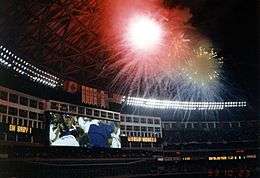
- The 1992 Summer Olympics are held in Barcelona, Spain.
- Major League Baseball players went on strike on 12 August 1994, thus ending the season and canceling the World Series for the first time in 90 years. The players' strike ended on 29 March 1995 when players and team owners came to an agreement.
- The 1991 World Series pitted the Atlanta Braves and the Minnesota Twins, two teams who finished last place in their respective divisions the previous season. The series would go all seven games won by the home teams that concluded in dramatic fashion with the Minnesota Twins claiming their second World Series title.
- American NBA basketball player Michael Jordan became a major sports and pop culture icon idolized by millions worldwide. He revolutionized sports marketing through deals with companies such as Gatorade, Hanes, McDonald's and Nike. His Chicago Bulls team won six NBA titles during the decade (1991, 1992, 1993, 1996, 1997 and 1998). He was loved outside basketball thanks to his self-portrayal in the film Space Jam with the Looney Tune characters.
- The National Hockey League would expand from 21 to 30 teams. During the expansion years, several teams would relocate to new cities: the Winnipeg Jets moved to Phoenix, Arizona and became the Phoenix Coyotes, the Quebec Nordiques moved to Denver and became the Colorado Avalanche, the Hartford Whalers moved to Raleigh, North Carolina and became the Carolina Hurricanes, and the Minnesota North Stars moved to Dallas and became the Dallas Stars.
- The NHL's 1990s expansion saw new teams in cities that previously never had NHL hockey: San Jose (San Jose Sharks), Anaheim (Mighty Ducks of Anaheim), Nashville (Nashville Predators), Miami (Florida Panthers), and Tampa (Tampa Bay Lightning). The NHL also returned to Atlanta with the expansion Atlanta Thrashers.
- Two of the NHL's Original Six teams, the New York Rangers and the Detroit Red Wings would end long Stanley Cup championship droughts; the Rangers in 1994 after 54 years, and the Red Wings would win back to back Cups in 1997 and 1998 after 42 years.
- Canadian hockey star Mario Lemieux led the Pittsburgh Penguins, one of the original NHL expansion teams, to back-to-back Stanley Cup championships in 1991 and 1992.
- In addition to the Pittsburgh Penguins, three other NHL expansion teams went on to earn their first Stanley Cup championships: the New Jersey Devils in 1995, the Colorado Avalanche in 1996, and the Dallas Stars in 1999.
- Canadian hockey star Wayne Gretzky announced his retirement from the NHL in 1999. Upon his final game on 18 April, he held forty regular-season records, fifteen playoff records, and six All-Star records. He is the leading point-scorer in NHL history, as well as the only NHL player to total over 200 points in one season – a feat he accomplished four times. In addition, he tallied over 100 points in 16 professional seasons, 14 of them consecutive. He played for four teams during his NHL career: the Edmonton Oilers, the Los Angeles Kings, the St. Louis Blues, and the New York Rangers.
- American cyclist Lance Armstrong won his first Tour de France in 1999, less than two years after battling testicular cancer.
- In professional wrestling, the boom period of the WWF from the late 1980s continued until 1993, led by such stars as Hulk Hogan and The Ultimate Warrior. A second boom period of the decade was introduced during the Monday Night Wars between the WWF and WCW from the middle of the decade to spawn the WWF's Attitude Era, home to some of the biggest names in Wrestling history such as The Undertaker, who would go on to have an undefeated streak at WrestleMania that would go on until WrestleMania XXX in April 2014, Stone Cold Steve Austin and The Rock and the highly popular nWo group, along with Sting and Goldberg who brought WCW major success.
- Manchester United won an unprecedented treble of the Premier League, FA Cup and Champions League after defeating Bayern Munich 2–1 in May 1999.
- The United States hosted the 15th staging of the World Cup in 1994. To this day, it holds the record for largest attendance per game during the World Cup finals (even after the tournament's expansion to 32 teams and 64 matches). Additionally, this led to the creation of the MLS.
- In motor racing, triple Formula One World Champion Ayrton Senna is fatally injured in a crash at San Marino in 1994. Michael Schumacher enters into the sport – winning his first two championships in 1994 and 1995. Dale Earnhardt wins the 1998 Daytona 500 and the NASCAR Winston Cup championship in 1990, 1991, 1993 and 1994. Indy Car racing delves into an organizational "Split".
- In the NFL, the San Francisco 49ers and the Washington Redskins showed promise of continuing their 80s glory by each team winning another Super Bowl at the beginning of the decade; but it was the Dallas Cowboys who made a gradual return to dynasty status, winning three Super Bowls (1992, 1993 and 1995) in a four-year span after a 14-year NFL championship drought.
- The Nebraska Cornhuskers led by head coach Tom Osborne won three national championships in college football in a four-year span (1994, 1995, 1997)
- Led by head coach Jim Tressel, The Youngstown State Penguins claimed to be the "team of the '90s" by winning four national championships (1991, 1993, 1994, 1997) in division I-AA college football[84]
- The Ultimate Fighting Championship (1993) and Pride Fighting Championship (1997) debut and evolve into the modern sport of Mixed Martial Arts.
- Major League Baseball added four teams, Miami Marlins (as Florida Marlins), Colorado Rockies, Tampa Bay Rays (as Tampa Bay Devil Rays), and the Arizona Diamondbacks, and moved one (Milwaukee Brewers) into the National League. The Florida Marlins would win the World Series in 1997 and 2003; the Arizona Diamondbacks would win the World Series in 2001, becoming the fastest expansion team to win a major championship for any major sport; the Colorado Rockies and Tampa Bay Rays would appear in the World Series in 2007 and 2008 respectively.
- In 1998, Canada wins gold metals for the first time in Disc ultimate at the WFDF World Ultimate Championship in Open, Mixed and Masters.
- In the 1996 Summer Olympics, the Women's Gymnastics team won the first team Gold Medal for the US in Olympic Gymnastics history.
Sports figures
- Andre Agassi
- Troy Aikman
- Roberto Alomar
- Roberto Baggio
- Franco Baresi
- Charles Barkley
- Gabriel Batistuta
- David Beckham
- Barry Bonds
- Ray Bourque
- Martin Brodeur
- Cafu
- Brandi Chastain
- Eric Cantona
- Roger Clemens
- Cynthia Cooper
- Terrell Davis
- Clyde Drexler
- Dale Earnhardt
- John Elway
- Patrick Ewing
- Brett Favre
- Paul Gascoigne
- Tom Glavine
- Ryan Giggs
- Steffi Graf
- Wayne Gretzky
- Ken Griffey Jr.
- Ruud Gullit
- Tony Gwynn
- Gheorghe Hagi
- Mia Hamm
- Grant Hill
- Evander Holyfield
- Oscar De La Hoya
- Brett Hull
- Michael Irvin
- Jaromír Jágr
- Derek Jeter
- Chipper Jones
- Michael Johnson
- Randy Johnson
- Michael Jordan
- Jim Kelly
- Jason Kidd
- Jurgen Klinnsman
- Barry Larkin
- Michael Laudrup
- Brian Leetch
- Mario Lemieux
- Lisa Leslie
- Carl Lewis
- Lennox Lewis
- Gary Lineker
- Rebecca Lobo
- Greg Maddux
- Paolo Maldini
- Karl Malone
- Diego Maradona
- Dan Marino
- Mark Messier
- Reggie Miller
- Alonzo Mourning
- Scott Niedermayer
- Hakeem Olajuwon
- Shaquille O'Neal
- Gary Payton
- Mike Piazza
- Scottie Pippen
- Kirby Puckett
- Andre Reed
- Jerry Rice
- Frank Rijkaard
- Cal Ripken Jr.
- David Robinson
- Dennis Rodman
- Romário
- Ronaldo
- Patrick Roy
- Joe Sakic
- Pete Sampras
- Barry Sanders
- Deion Sanders
- Peter Schmeichel
- Brendan Shanahan
- Shannon Sharpe
- Alan Shearer
- Teddy Sheringham
- Bruce Smith
- Emmitt Smith
- John Smoltz
- Scott Stevens
- John Stockton
- Hristo Stoichkov
- Kerri Strug
- Davor Šuker
- Sheryl Swoopes
- Claudio Taffarel
- Frank Thomas
- Thurman Thomas
- Mike Tyson
- Marco van Basten
- Reggie White
- Steve Young
- Steve Yzerman
- Zinedine Zidane
Literature
- The hugely successful Harry Potter series by J. K. Rowling debuted in 1997. The series would go on to become the best-selling book series in world history with only seven main novels.
- John Grisham was the bestselling author in the United States in the 1990s, with over 60 million copies sold of novels such as The Pelican Brief, The Client, and The Firm.[85]
- Other successful authors of the 1990s include Stephen King, Danielle Steel, Michael Crichton, and Tom Clancy.[85]
- Goosebumps by R. L. Stine, the second highest-grossing book series in the world, debuted in 1992 and remained a dominant player in children's literature throughout and after the decade.
See also
| Wikimedia Commons has media related to 1990s. |
- 1990s in music
- 1990s in fashion
- 1990s in television
- 1990s in science and technology
- 1990s in video gaming
- 1990s in literature
- Generation X – Members of this generation would have been young adults or teenagers during this decade, while the oldest members were nearly 40 as the decade closed.
- Millennials – Members of this generation were still being born throughout the 1990s, the older members would have been reaching their early 20s.
Notes
- Guidelines for this section are listed at Wikipedia:WikiProject Years#Notable world leaders
References
- Handyside, AH; Kontogianni, EH; Hardy, K; Winston, RM (1990). "Pregnancies from biopsied human preimplantation embryos sexed by Y-specific DNA amplification". Nature. 344 (6268): 768–70. doi:10.1038/344768a0. PMID 2330030.
- Stiglitz, Joseph E. (2004). The Roaring Nineties. W. W. Norton. ISBN 978-0-393-32618-5.
- Fritsch, Helmut (2008). "EUFOR RD Congo: A Misunderstood Operation?". Martello Papers. 33. Queen's University at Kingston: 5–6, 8. ISBN 978-1-55339-101-2. Cite journal requires
|journal=(help) - GlobalSecurity.org, Second Chechnya War – 1999–???
- Des Forges, Alison (1999). Leave None to Tell the Story: Genocide in Rwanda. Human Rights Watch. ISBN 978-1-56432-171-8. Retrieved 12 January 2007.
- See, e.g., Rwanda: How the genocide happened, BBC, 1 April 2004, which gives an estimate of 800,000, and OAU sets inquiry into Rwanda genocide Archived 25 February 2007 at the Wayback Machine, Africa Recovery, Vol. 12 1#1 (August 1998), page 4, which estimates the number at between 500,000 and 1,000,000. 7 out of every 10 Tutsis were killed.
- Pruitt, Sarah (2 April 2020). "How Ruby Ridge and Waco Led to the Oklahoma City Bombing". History. Retrieved 9 April 2020.
- Sorin Antohi and Vladimir Tismăneanu, "Independence Reborn and the Demons of the Velvet Revolution" in Between Past and Future: The Revolutions of 1989 and Their Aftermath, Central European University Press. ISBN 978-963-9116-71-9. p.85.
- Evans, Martha (February 2012). "Transmitting the Transition: Media Events and Post-Apartheid South African National Identity". University of Cape Town: ix. hdl:11427/10475. Retrieved 11 April 2020. Cite journal requires
|journal=(help) - Peatling, Gary (2004). The failure of the Northern Ireland peace process. Irish Academic Press, p. 58. ISBN 0-7165-3336-7
- Cox, Michael, Guelke, Adrian and Stephen, Fiona (2006). A farewell to arms?: beyond the Good Friday Agreement. Manchester University Press, p. 486. ISBN 0-7190-7115-1
- Clark, Desmond and Jones, Charles (1999). The rights of nations: nations and nationalism in a changing world. Palgrave Macmillan, p. 168. ISBN 0-312-22595-4
- Cox & Guelke, pp. 487–488
- ARK: Northern Ireland Elections, The 1998 Referendums
- Politics 97 by Joshua Rozenberg: BBC website. Retrieved 9 July 2006.
- "Past Referendums – Scotland 1997". The Electoral Commission. Archived from the original on 7 December 2006.
- Morgan, Bryn (8 October 1999). "House of Commons Research Paper – Scottish Parliament Elections: 6 May 1999" (PDF). House of Commons Library. Retrieved 17 November 2006.
- "Archived copy". Archived from the original on 14 October 2002. Retrieved 7 February 2016.CS1 maint: archived copy as title (link) CS1 maint: BOT: original-url status unknown (link)
- Abramovitz, Janet N. (2001). "Averting Natural Disasters". State of the World 2001. Worldwatch Institute. W. W. Norton & Company. pp. 123, 126. ISBN 0-393-04866-7. Retrieved 13 April 2020.
- Boschker, Karen; Sieberson, Eric (2007). "The Euro: Money Changes Everything" (PDF). University of Washington. Retrieved 9 April 2020. Cite journal requires
|journal=(help) - "Computer Ownership Up Sharply in the 1990s" (PDF).
- "Did 1993 Change Everything? – New York Magazine".
- Grossman, Lev (31 March 2003). "How the Web Was Spun". Time Magazine. Archived from the original on 25 June 2009. Retrieved 19 July 2009.
Berners-Lee's computer faithfully logged the exact second the site was launched: 2:56:20 pm, 6 August 1991.
- InfoWorld Jan 8 1990. InfoWorld Media Group, Inc. 8 January 1990.
- "Blast from the Past: Buying a Computer in 1995". 27 December 2011. Archived from the original on 18 May 2015. Retrieved 8 May 2015.
- "Archived copy". Archived from the original on 24 March 2012. Retrieved 3 June 2011.CS1 maint: archived copy as title (link)
- "Our history". Eurotunnel. Archived from the original on 3 January 2010. Retrieved 10 May 2009.
- "Official Waterloo 'Goodbye' video, useful statistics and numbers shown". YouTube.com. 20 December 2007. Retrieved 27 April 2010.
- "Waterloo International: 1994–2007". The Guardian. London. 13 November 2007.
- Takagi, Ryo (March 2005). "High-speed Railways:The last ten years" (PDF). Japan Railway & Transport Review (40): 4–7. Archived from the original (PDF) on 20 June 2009.
- "Eurostar celebrates 10 years at Ashford International" (Press release). Eurostar. 9 January 2006. Archived from the original on 22 May 2012.
- Callaway, Ewen (30 June 2016). "Dolly at 20: The Inside Story on the World's Most Famous Sheep". Scientific American. Nature. Archived from the original on 30 December 2019. Retrieved 10 April 2020.
- Perrineau, Aude; Hairy, Guillaume; Serra, Marina Martin (2016). The Chernobyl Disaster : The Nuclear Catastrophe and Its Devastating Effects. ISBN 9782806279200.
- Breidenich, Clare; Magraw, Daniel; Rowley, Anne; Rubin, James W. (April 1998). "The Kyoto Protocol to the United Nations Framework Convention on Climate Change". 92 (2). Cambridge University Press. doi:10.2307/2998044. Retrieved 9 April 2020. Cite journal requires
|journal=(help) - Generations Defined Archived 16 June 2016 at the Wayback Machine. Mark McCrindle
- Dish, The Daily (7 July 2009). "What Happened In 1990?".
- Dahlburg, John-Thor (20 September 1997). "Survivor Can't Recall Paris Crash". Los Angeles Times. Archived from the original on 9 April 2020. Retrieved 9 April 2020.
- Dahlburg, John-Thor (6 September 1997). "Mother Teresa, 87, Dies; Devoted Her Life to Poor". Los Angeles Times. Retrieved 9 April 2020.
- "Titanic (1997)". Archived from the original on 12 May 2009. Retrieved 22 May 2009.
- "1991". Oscars.org | Academy of Motion Picture Arts and Sciences. Academy of Motion Picture Arts and Sciences. Retrieved 5 July 2018.
- "1992". Oscars.org | Academy of Motion Picture Arts and Sciences. Academy of Motion Picture Arts and Sciences. Retrieved 5 July 2018.
- "1993". Oscars.org | Academy of Motion Picture Arts and Sciences. Academy of Motion Picture Arts and Sciences. Retrieved 5 July 2018.
- "1994". Oscars.org | Academy of Motion Picture Arts and Sciences. Academy of Motion Picture Arts and Sciences. Retrieved 5 July 2018.
- "1995". Oscars.org | Academy of Motion Picture Arts and Sciences. Academy of Motion Picture Arts and Sciences. Retrieved 5 July 2018.
- "1996". Oscars.org | Academy of Motion Picture Arts and Sciences. Academy of Motion Picture Arts and Sciences. Retrieved 5 July 2018.
- "1997". Oscars.org | Academy of Motion Picture Arts and Sciences. Academy of Motion Picture Arts and Sciences. Retrieved 5 July 2018.
- "1998". Oscars.org | Academy of Motion Picture Arts and Sciences. Academy of Motion Picture Arts and Sciences. Retrieved 5 July 2018.
- "1999". Oscars.org | Academy of Motion Picture Arts and Sciences. Academy of Motion Picture Arts and Sciences. Retrieved 5 July 2018.
- "2000". Oscars.org | Academy of Motion Picture Arts and Sciences. Academy of Motion Picture Arts and Sciences. Retrieved 5 July 2018.
- Maslin, Janet (22 May 1990). "David Lynch Film Takes the Top Prize at Cannes Festival". The New York Times. The New York Times Company. Retrieved 5 July 2018.
- Canby, Vincent (21 May 1991). "'Barton Fink' Wins the Top Prize And 2 Others at Cannes Festival". The New York Times. The New York Times Company. Retrieved 5 July 2018.
- Maslin, Janet (19 May 1992). "Swedish Film Is No. 1 at Cannes; Tim Robbins Wins Acting Prize". The New York Times. The New York Times Company. Retrieved 5 July 2018.
- Canby, Vincent (25 May 1993). "Top Prize at Cannes Is Shared". The New York Times. The New York Times Company. Retrieved 5 July 2018.
- Maslin, Janet (24 May 1994). "A Dark Comedy Wins at Cannes". The New York Times. The New York Times Company. Retrieved 5 July 2018.
- Maslin, Janet (29 May 1995). "2 Films on Strife in Balkans Win Top Prizes at Cannes". The New York Times. The New York Times Company. Retrieved 5 July 2018.
- Maslin, Janet (21 May 1996). "Secrets and Lies' Wins the Top Prize at Cannes". The New York Times. The New York Times Company. Retrieved 5 July 2018.
- Maslin, Janet (19 May 1997). "Pensiveness, Not Glitz, Gets The Gold at Cannes Festival". The New York Times. The New York Times Company. Retrieved 5 July 2018.
- Maslin, Janet (25 May 1998). "Greek Director Wins Top Prize at Cannes Festival". The New York Times. The New York Times Company. Retrieved 5 July 2018.
- Maslin, Janet (24 May 1998). "A Belgian Film Wins Top Prize at the Cannes Festival". The New York Times. The New York Times Company. Retrieved 5 July 2018.
- "Worldwide Box Office". Box Office Mojo. pp. 1990–1994, 1996–1999. Retrieved 10 April 2020.
- Leopold, Todd (22 August 2002). "'Like, Omigod!' It's the return of the '80s". The New York Times. The New York Times Company. Archived from the original on 4 November 2013.
- Leopold, Todd (21 July 2005). "Return of the '90s". Return of the '90s. Archived from the original on 16 March 2012. Retrieved 22 March 2013.
- DeCurtis, Anthony (5 October 1999). "The Ball Drops on the Music Industry". Rolling Stone. Retrieved 10 December 2012.
- Leeds, Jeff (13 February 2005). "We Hate the 80s". The New York Times. Retrieved 28 April 2013.
- Eddy, Chuch (10 November 2009). "MYTH No. 2: Nirvana Killed Hair Metal". Spin. Retrieved 17 September 2011.
- Pareles, Jon (14 June 1992). "POP VIEW; Nirvana-bes Awaiting Fame's Call". The New York Times. Retrieved 23 November 2011.
- "Music Genres". AllMusic.
- Wilson, Carl (4 August 2011). "My So Called Adulthood". The New York Times. Retrieved 25 August 2011.
- McGee, Allan (3 January 2008). "The missing link of hip-hop's golden age". The Guardian. UK. Retrieved 17 September 2011.
- Caramanica, Jon (9 November 2009). "MYTH No. 4: Biggie & Tupac Are Hip-Hop's Pillars". Spin. Retrieved 4 September 2011.
- Batey, Angus (7 October 2010). "The hip-hop heritage society". The Guardian. UK. Retrieved 8 November 2011.
- Martinez, Michael (9 February 2011). "The music dies for once popular 'Guitar Hero' video game". CNN. Archived from the original on 11 August 2011.
- "BBC – Press Office – New Spice Girls documentary on BBC One".
- "1998: Ginger leaves the Spice Girls". BBC News. 31 May 1998. Retrieved 29 March 2010.
- "Teen Pop Music: A Guide". Archived from the original on 11 February 2009. Retrieved 26 August 2009.
- "Teen Pop". AllMusic. Retrieved 17 February 2017.
- Ashthana, Anushka (25 May 2008). "They don't live for work ... they work to live". The Guardian. UK. Retrieved 21 July 2011.
- "Country is No. 1 musical style". Reading Eagle. 19 August 1992. Retrieved 26 July 2010.
- "Country music reflects the time". Herald-Journal. 27 September 1992. Retrieved 26 July 2010.
- Hurst, Jack (25 November 1993). "Country music is making waves across the seas". The Star. Retrieved 26 July 2010.
- "RIAA.com". RIAA.com. Archived from the original on 26 June 2007. Retrieved 1 February 2011.
- McCABE, HEATHER (25 April 1996). "With a New Beat and Attitude, the 'Vice' Man Cometh". Los Angeles Times.
- Wolf, Mark J.P. (2008). "Arcade Games of the 1990s and Beyond". The video game explosion: a history from PONG to PlayStation and beyond. Westport, Connecticut: Greenwood Press. p. 135. ISBN 978-0-313-33868-7. OCLC 154776597. Retrieved 19 July 2009.
The decline of arcade video games would come back in the 1990s, despite attempts to redefine the arcade experience and attract players back to the arcade.
- "Football Traditions".
- "Grisham ranks as top-selling author of decade". CNN. 31 December 1999. Retrieved 8 May 2015.
Further reading
- Ash, Timothy Garton. History of the Present: Essays, Sketches, and Dispatches from Europe in the 1990s (2009) excerpts
- Bender, Thomas. "'Venturesome and Cautious': American History in the 1990s." Journal of American History (1994): 992–1003. in JSTOR
- Bentley, Nick, ed. British Fiction of the 1990s (Routledge, 2007)
- Cornia, Giovanni Andrea, Ralph van der Hoeven, and Thandika Mkandawire. Africa's recovery in the 1990s: from stagnation and adjustment to human development (St. Martin's Press, 1992)
- Harrison, Thomas (2011). Music of the 1990s. ABC-CLIO. ISBN 9780313379437.
- O'Neill, William. A Bubble in Time: America During the Interwar Years, 1989-2001 (2009) Excerpt
- Parratt, Catriona M. "About Turns: Reflecting on Sport History in the 1990s." Sport History Review (1998) 29#1 pp: 4–17.
- Sierz, Aleks. Modern British Playwriting: The 1990s: Voices, Documents, New Interpretations (A&C Black, 2012)
- Stiglitz, Joseph E. The roaring nineties: A new history of the world's most prosperous decade (Norton, 2004), economic history
- Turner, Alwyn. A Classless Society: Britain in the 1990s Aurum Press (2013)
- van der Hoeven, Arno. "Remembering the popular music of the 1990s: dance music and the cultural meanings of decade-based nostalgia." International journal of heritage studies (2014) 20#3 pp: 316–330.
- Yoda, Tomiko, and Harry Harootunian, eds. Japan After Japan: Social and Cultural Life from the Recessionary 1990s to the Present (2006)
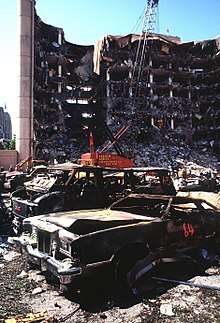

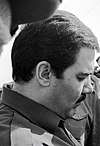

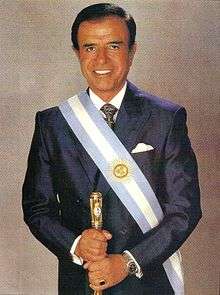
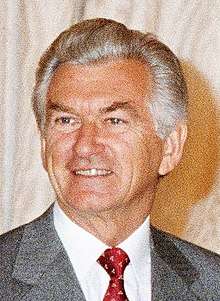
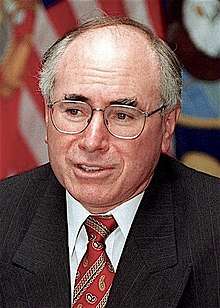
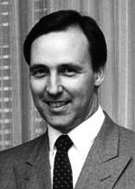
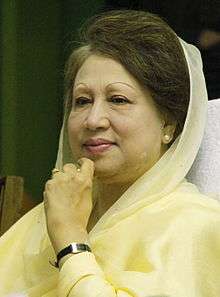


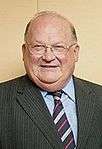
.jpg)
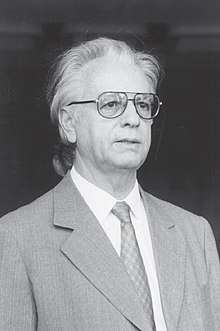

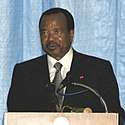
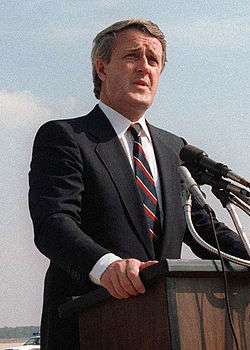
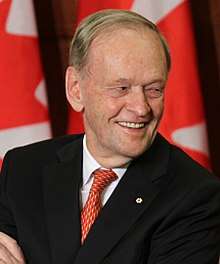
.jpg)


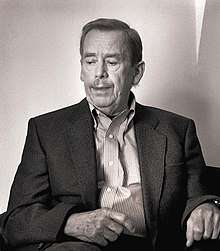


.jpg)
_(cropped).jpg)
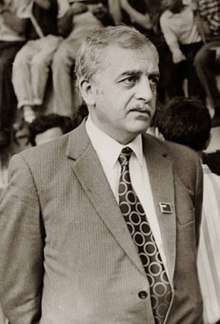
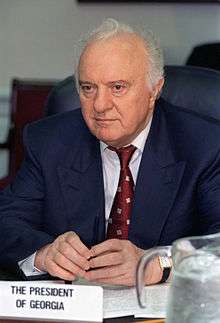
_cropped.tif.jpg)
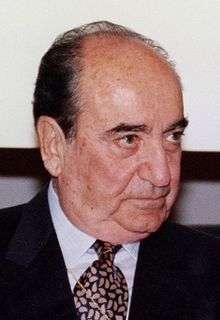

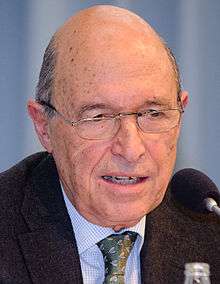
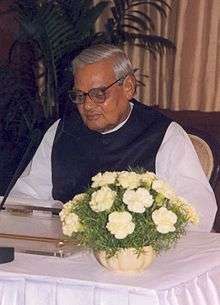

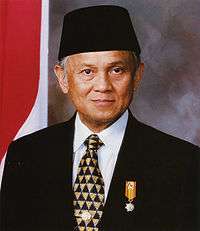
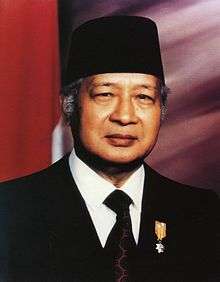
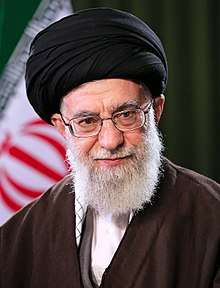
.jpg)
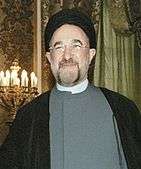

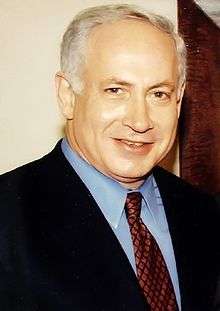

_cropped.jpg)
.jpg)
.jpg)


.jpg)

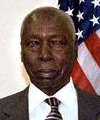
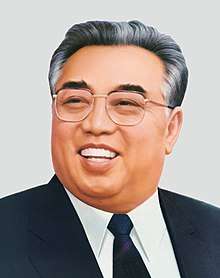
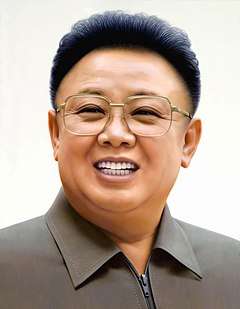


.png)
.jpeg)


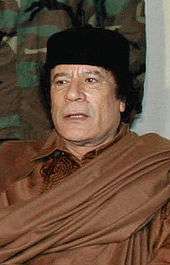
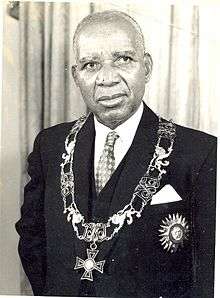
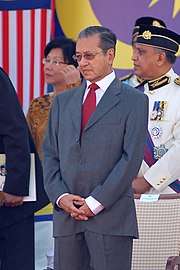
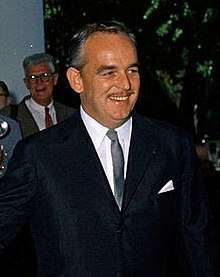
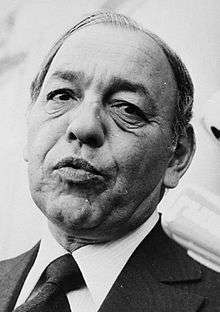
.jpg)
.jpg)

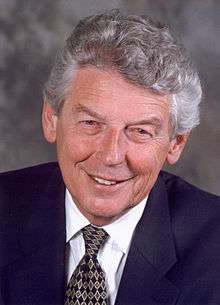
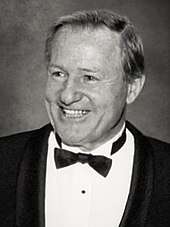
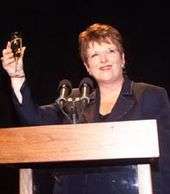
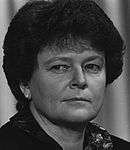
_(1).jpg)

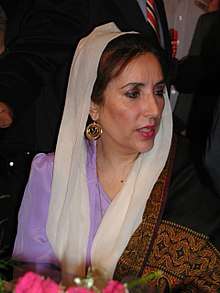
_-_THE_NOBEL_PEACE_PRIZE_LAUREATES_FOR_1994_IN_OSLO._(cropped).jpg)
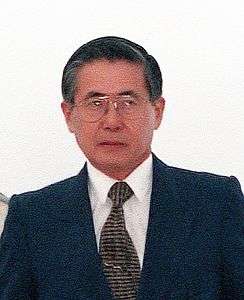



.jpg)
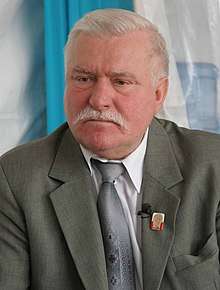
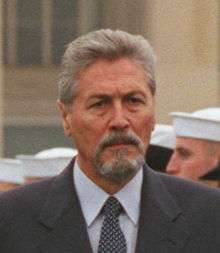
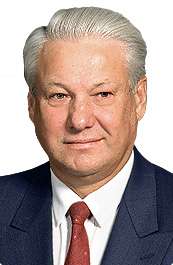

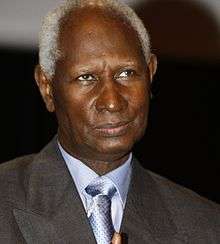
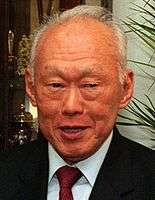
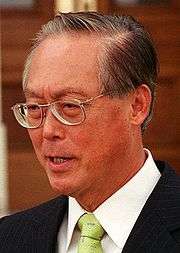
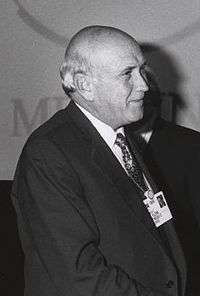
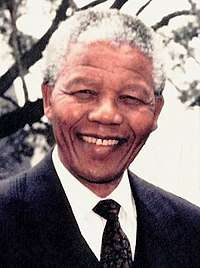
.jpg)
.jpg)





.jpg)
.png)
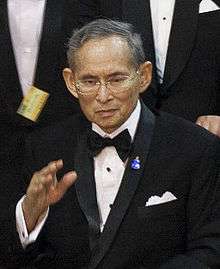
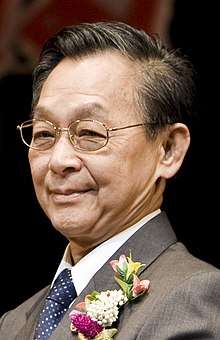
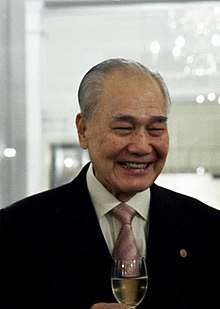


_Rueda_de_prensa_de_Felipe_Gonz%C3%A1lez_y_la_primera_ministra_de_Turqu%C3%ADa._Pool_Moncloa._16_de_noviembre_de_1995_(cropped).jpeg)


.jpg)
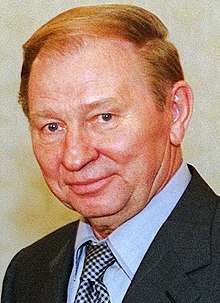
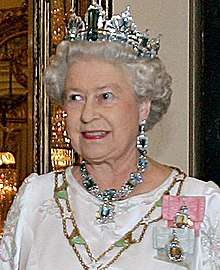
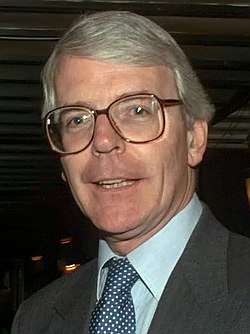
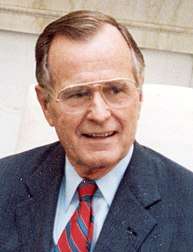
.jpg)
.jpg)
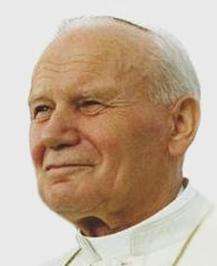

.png)







